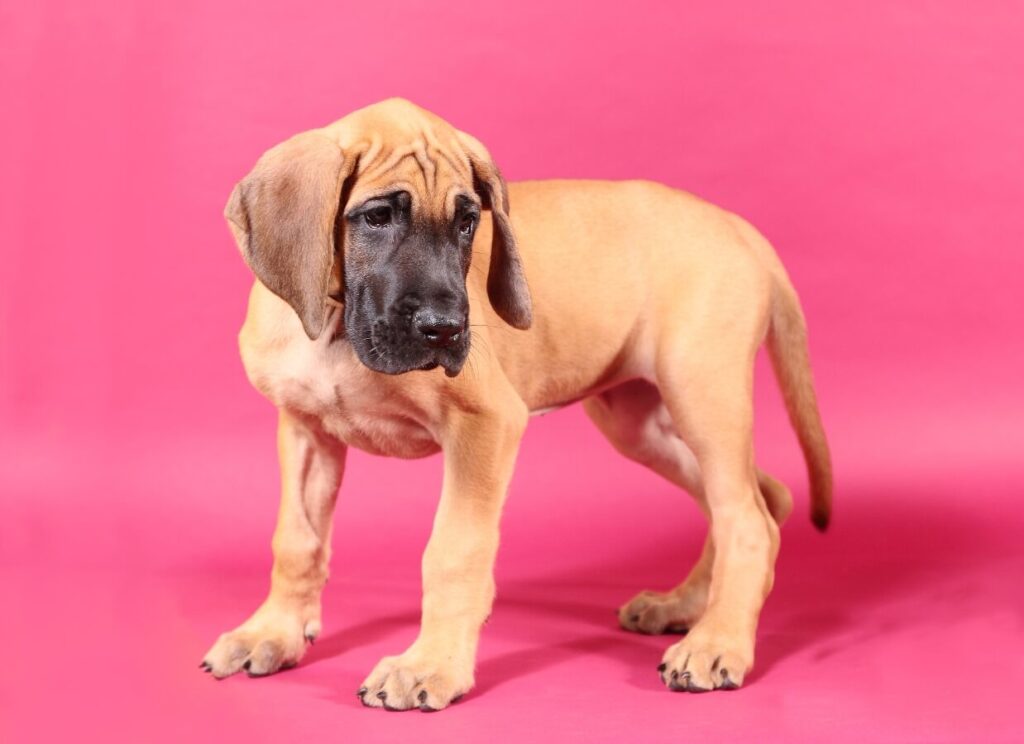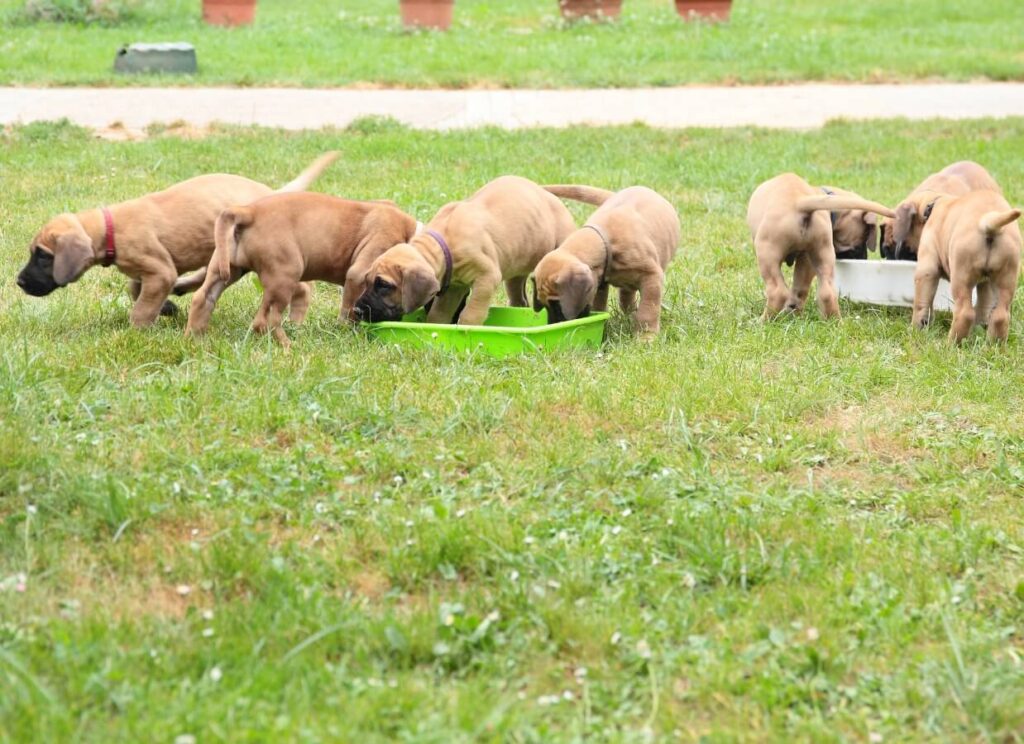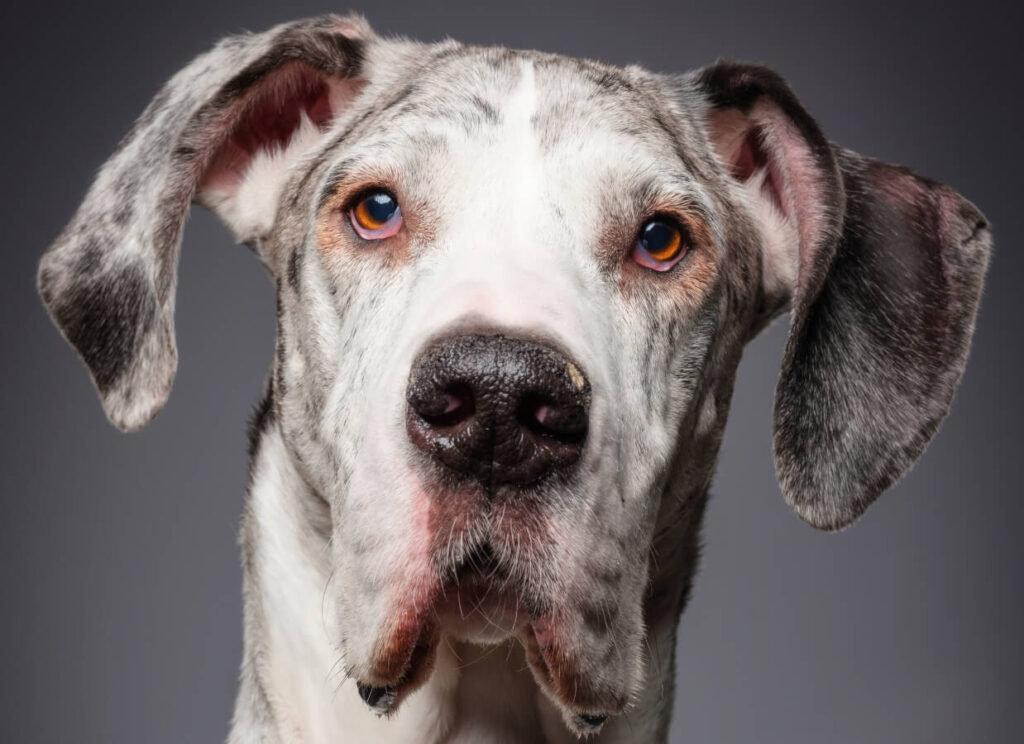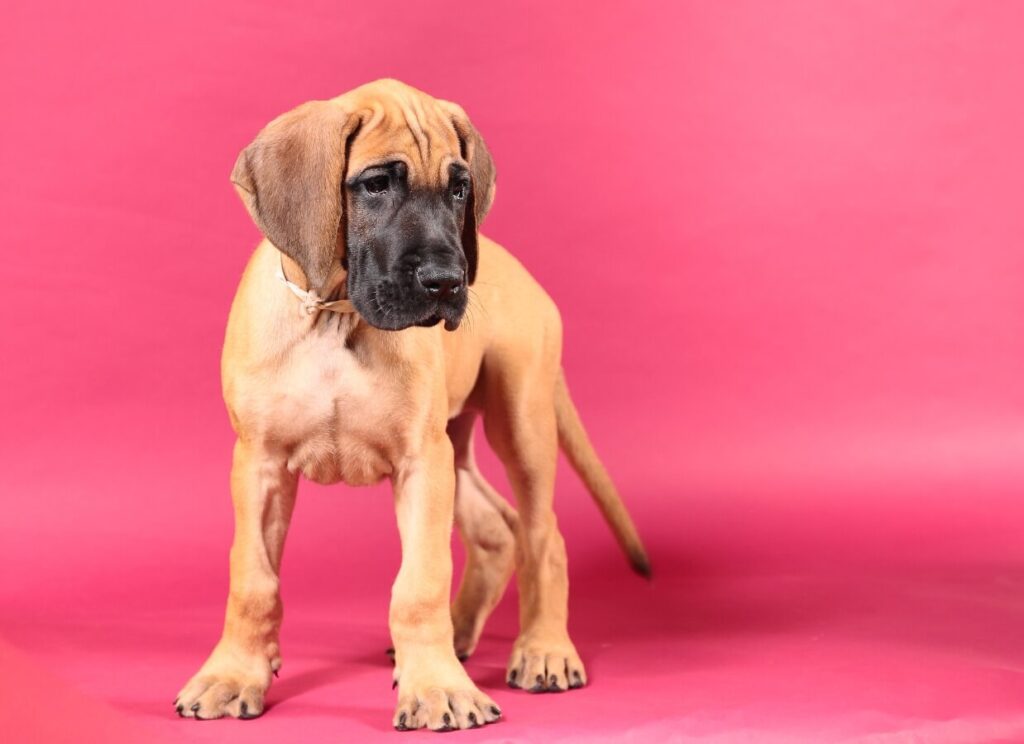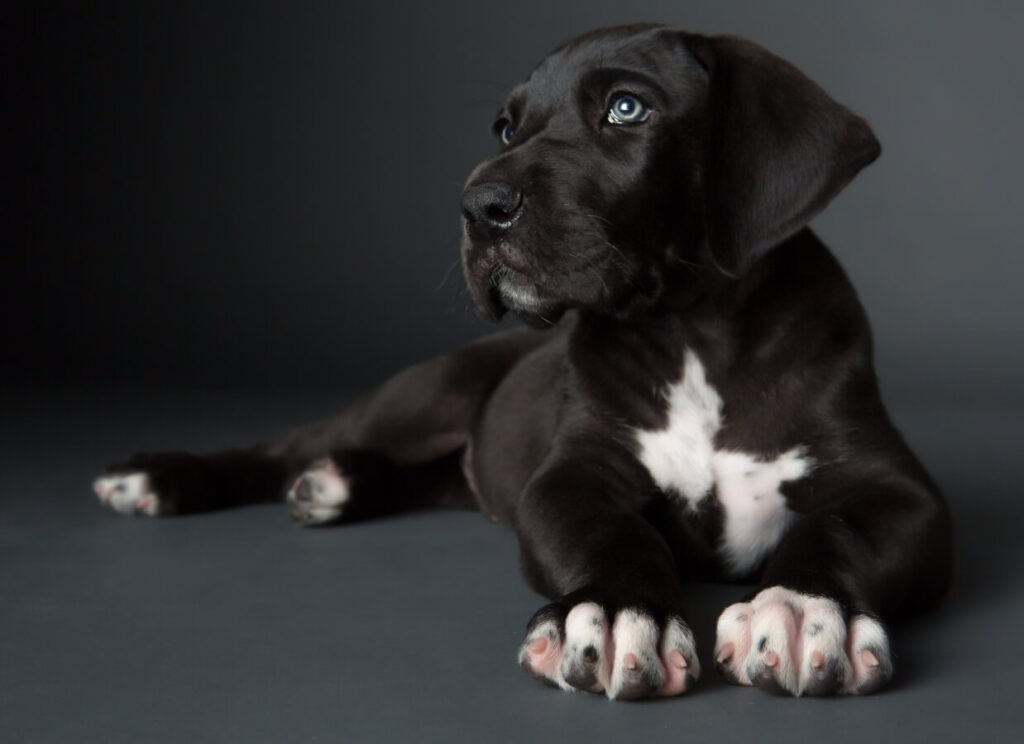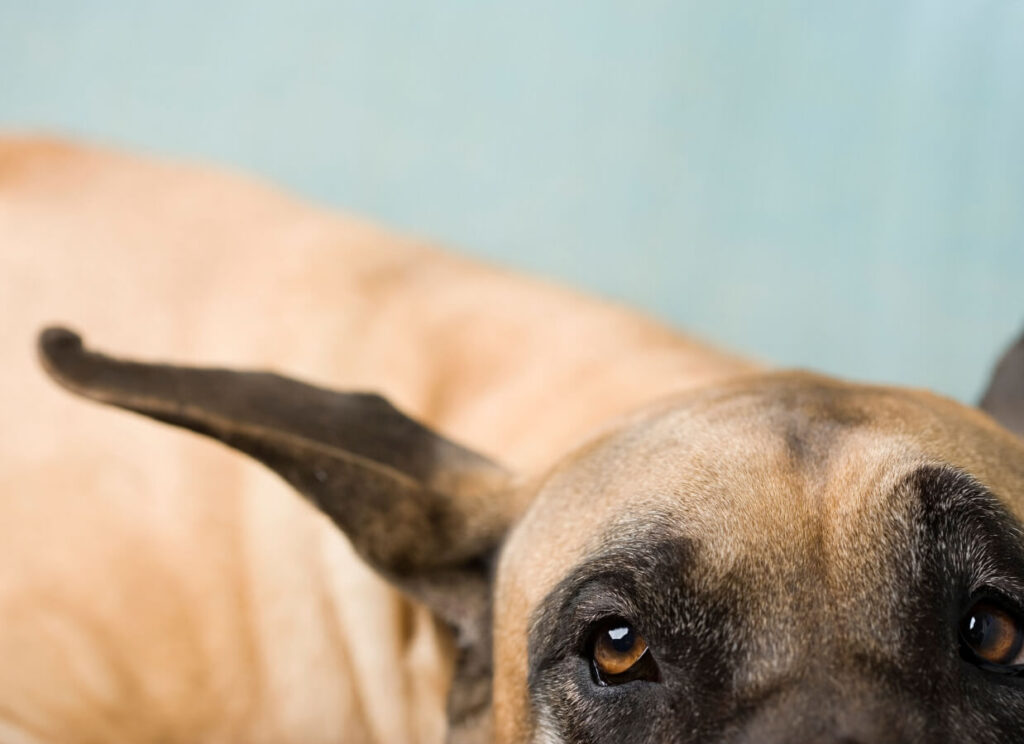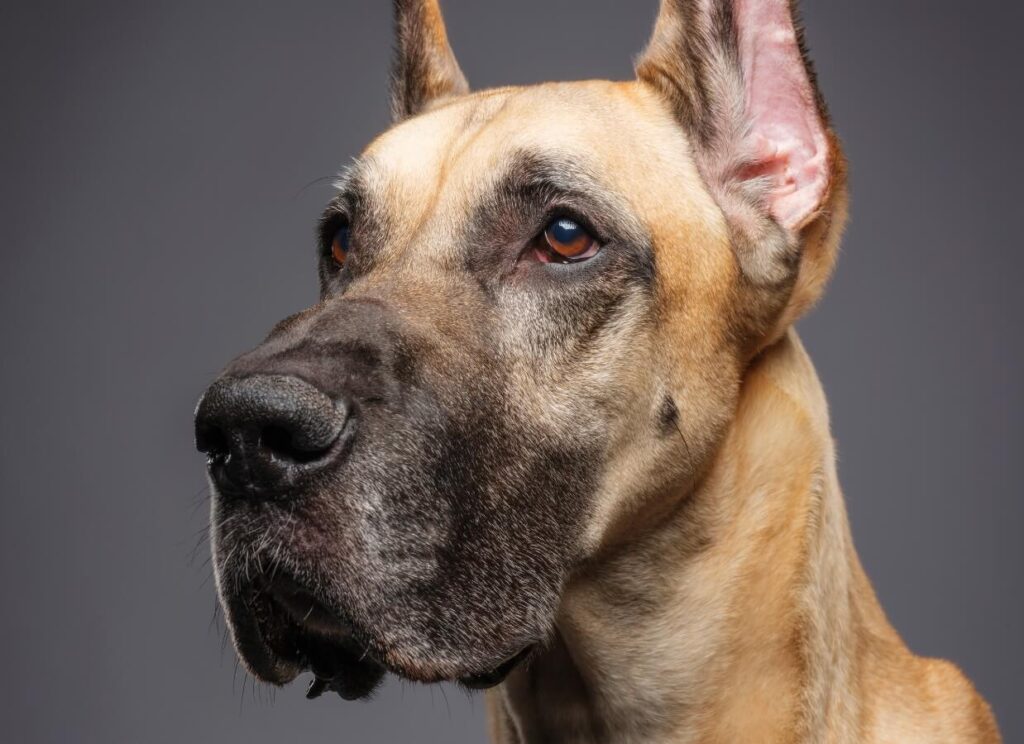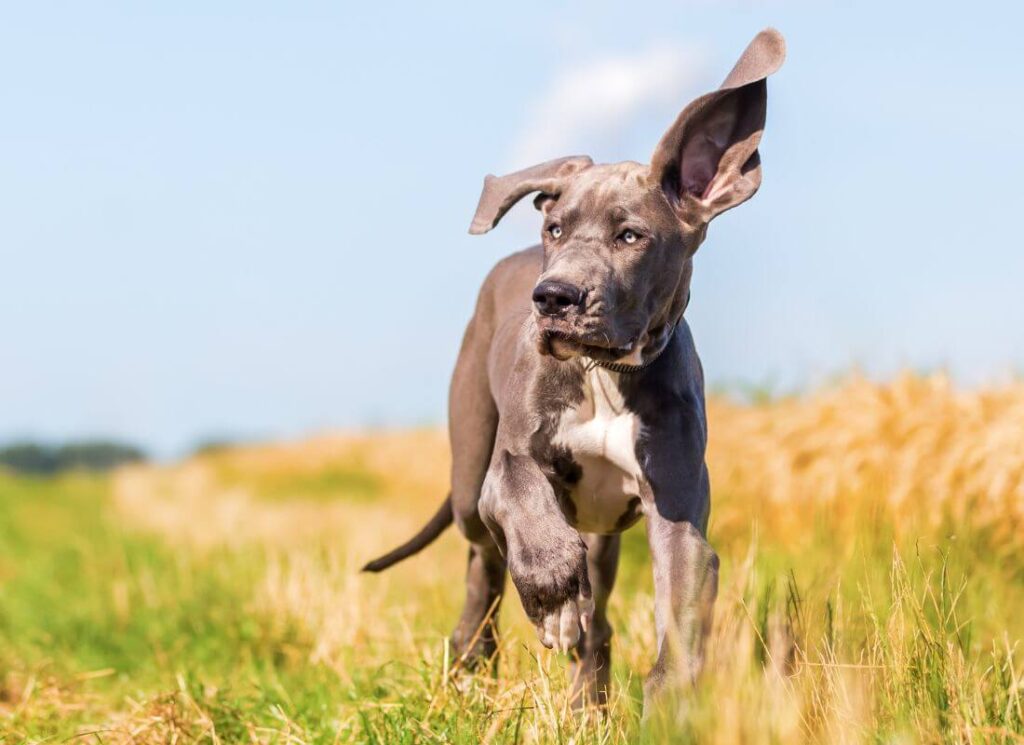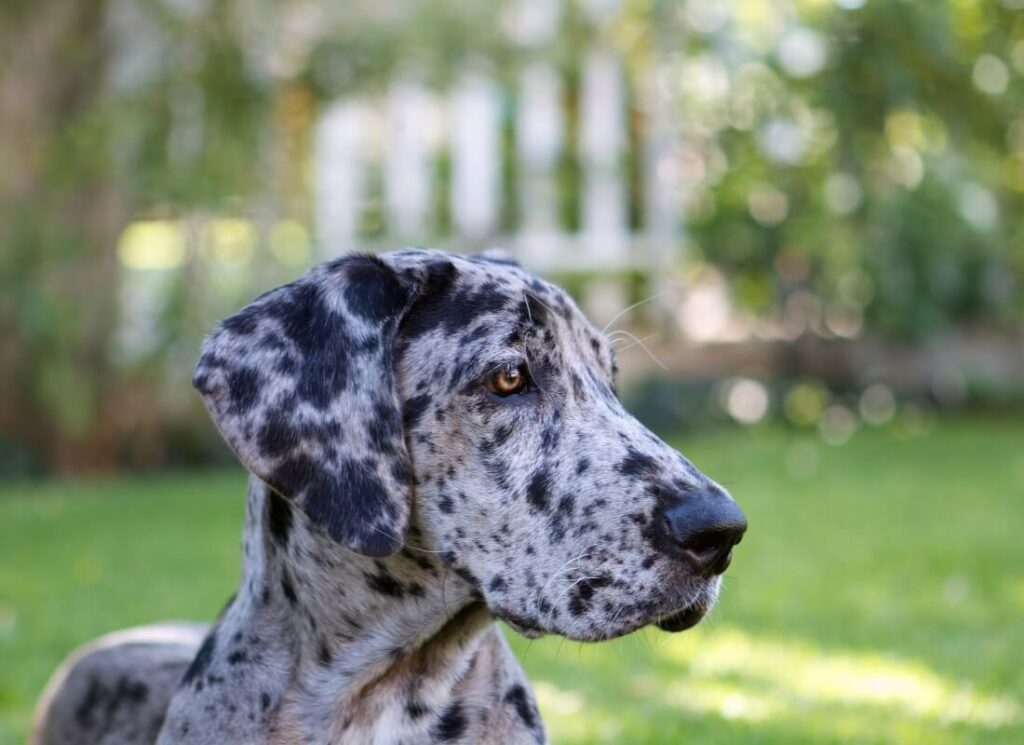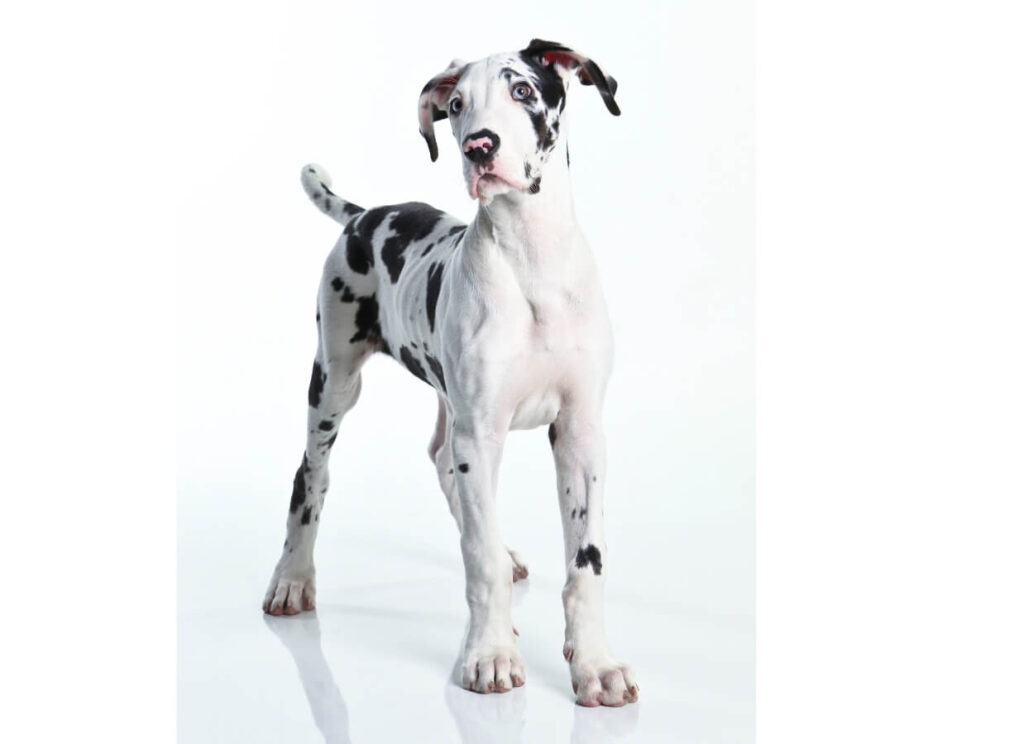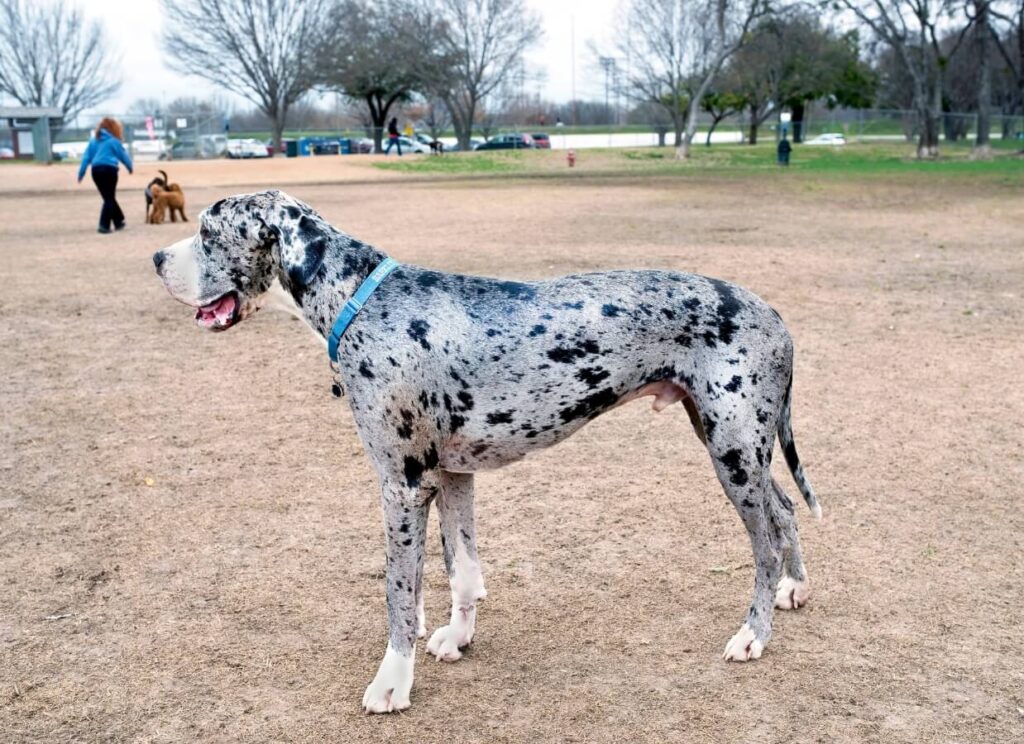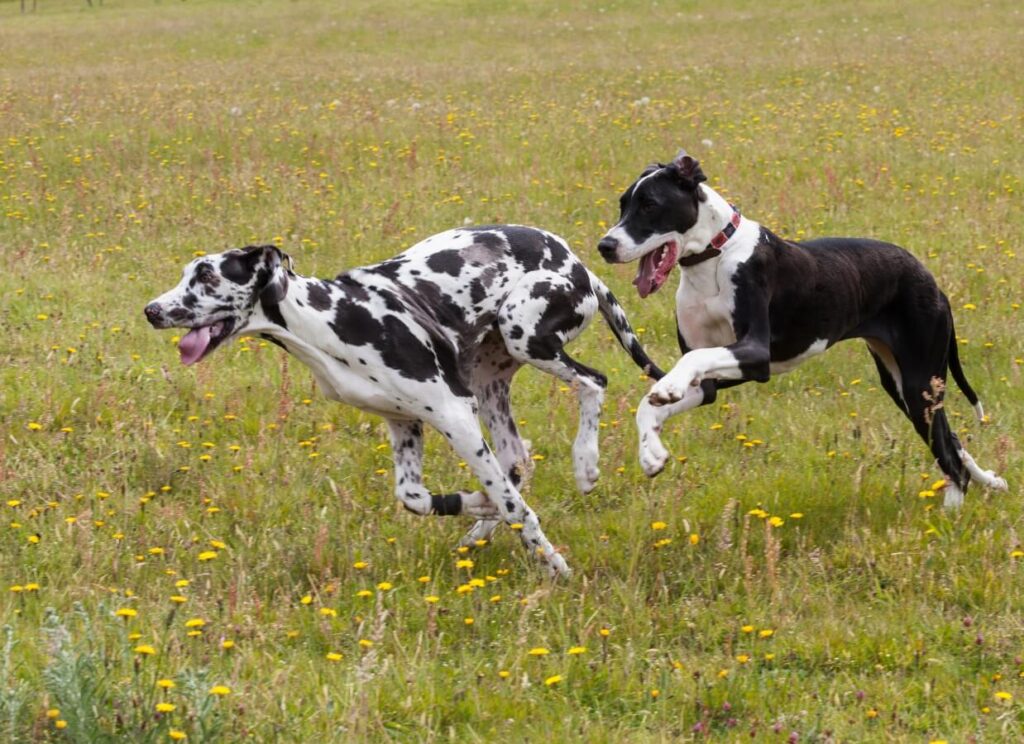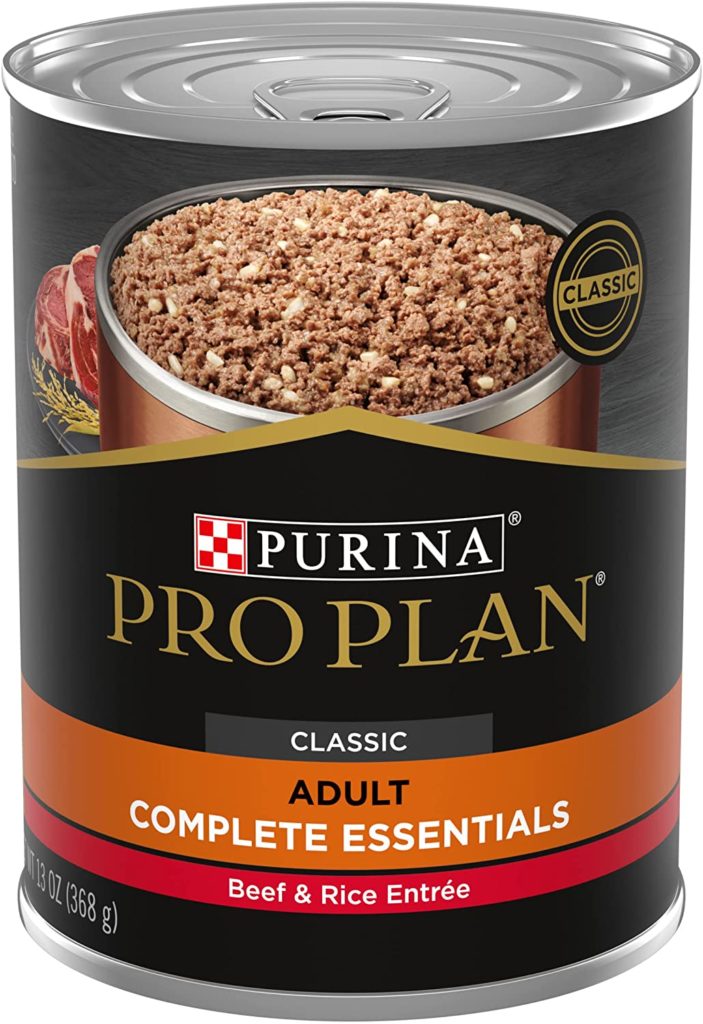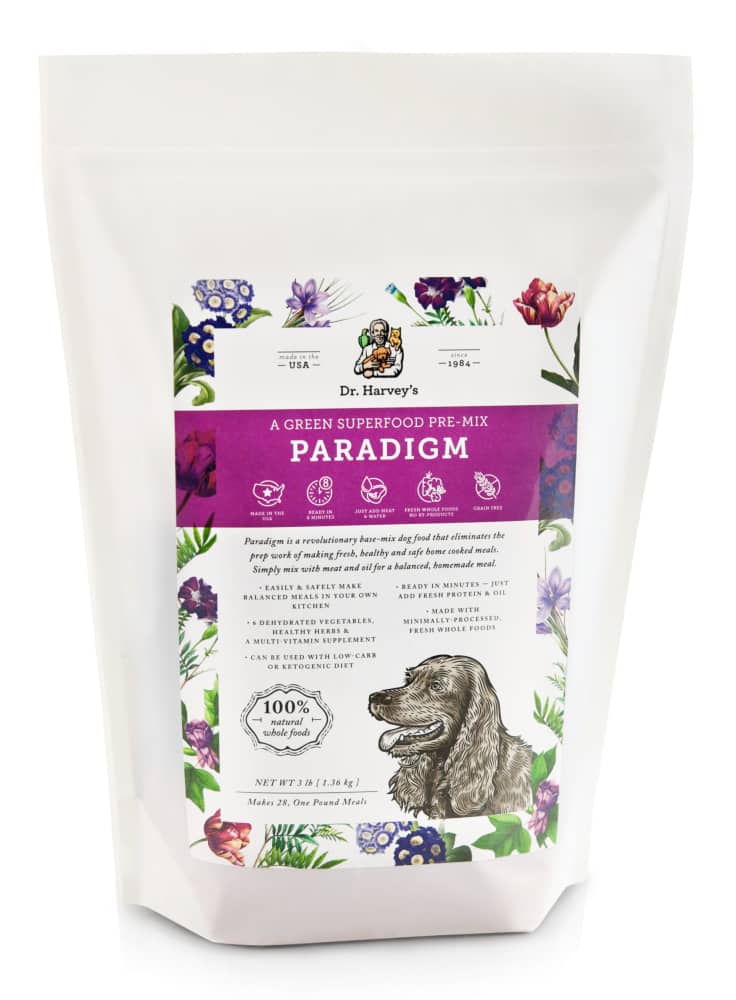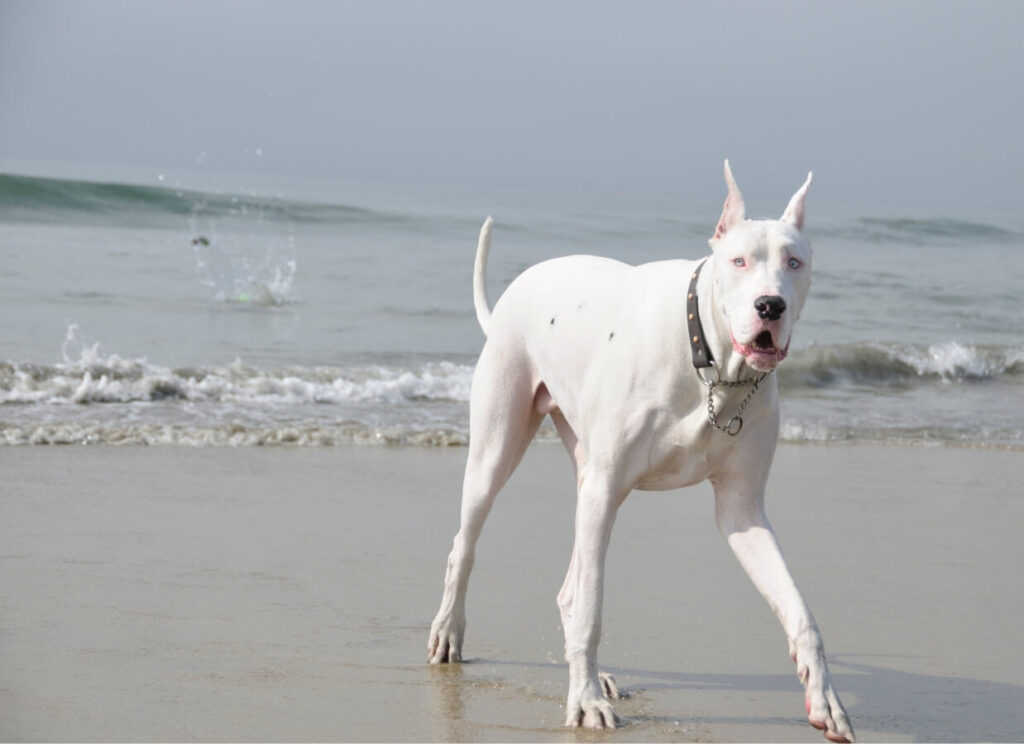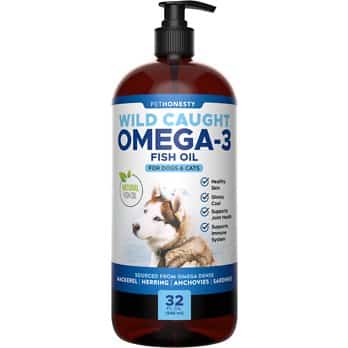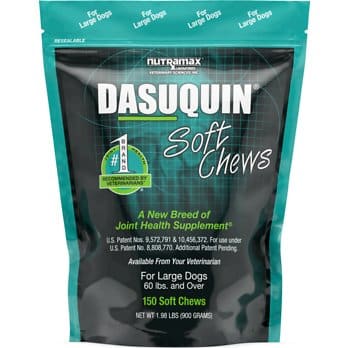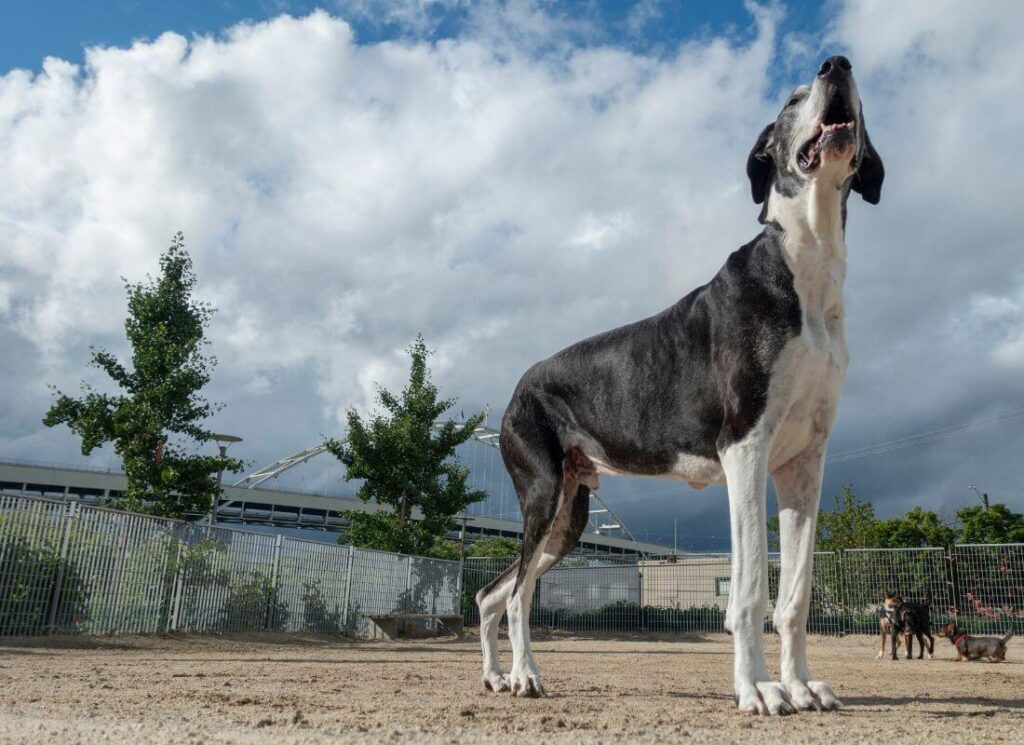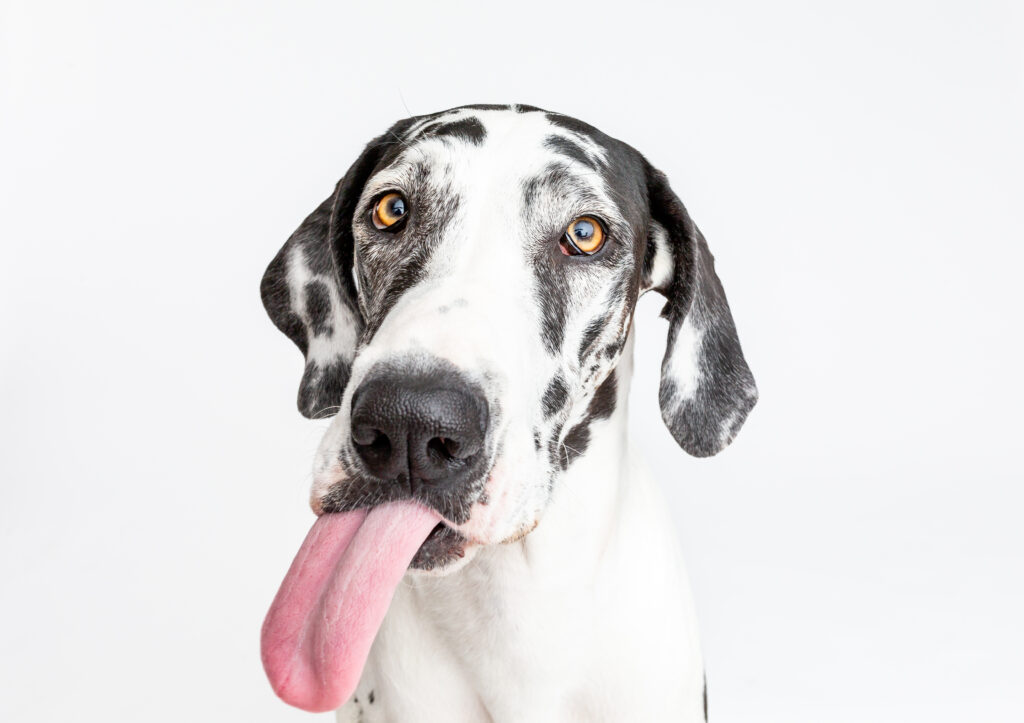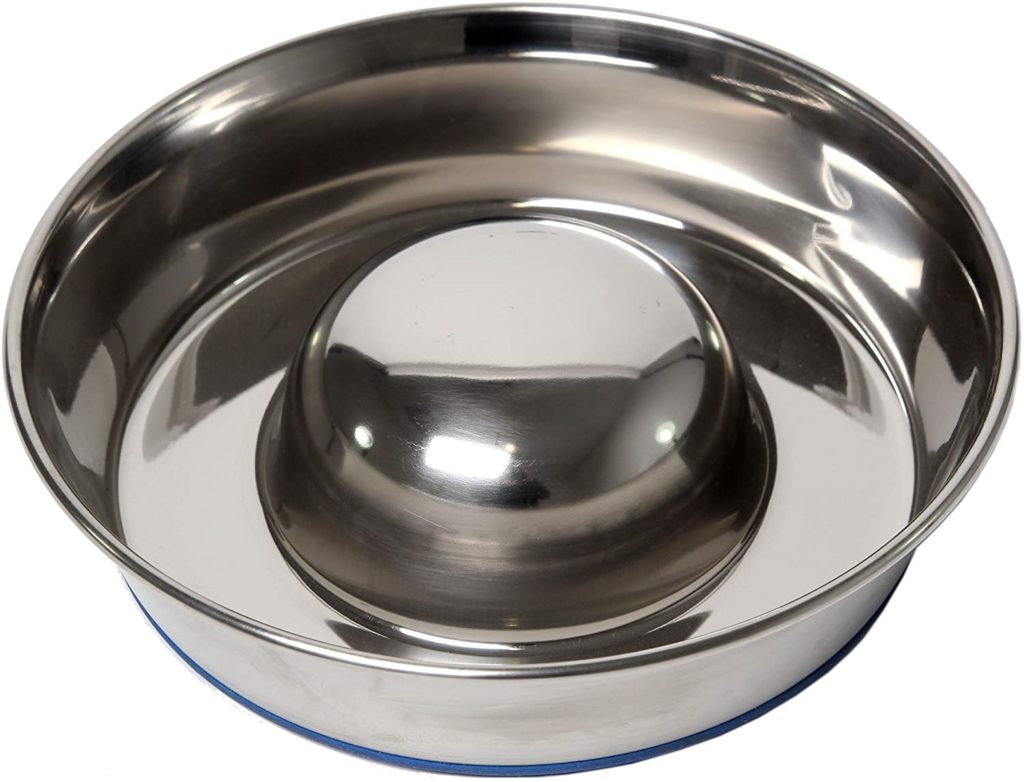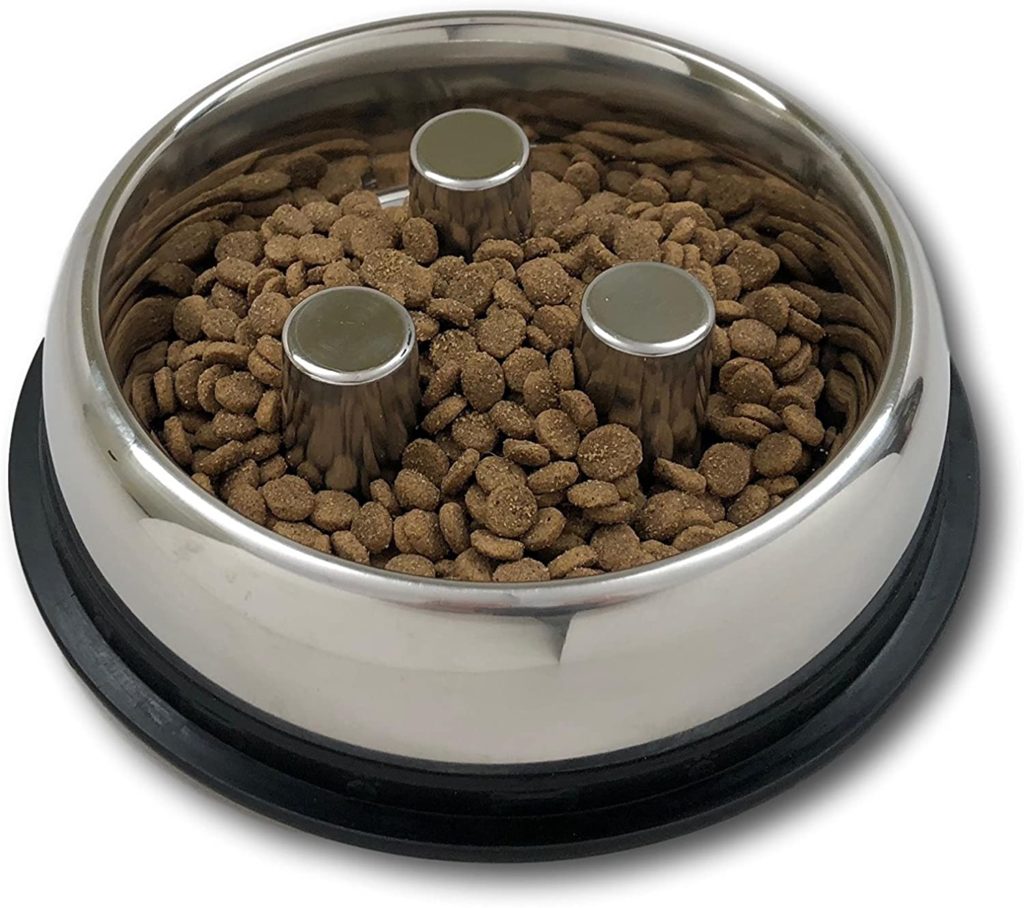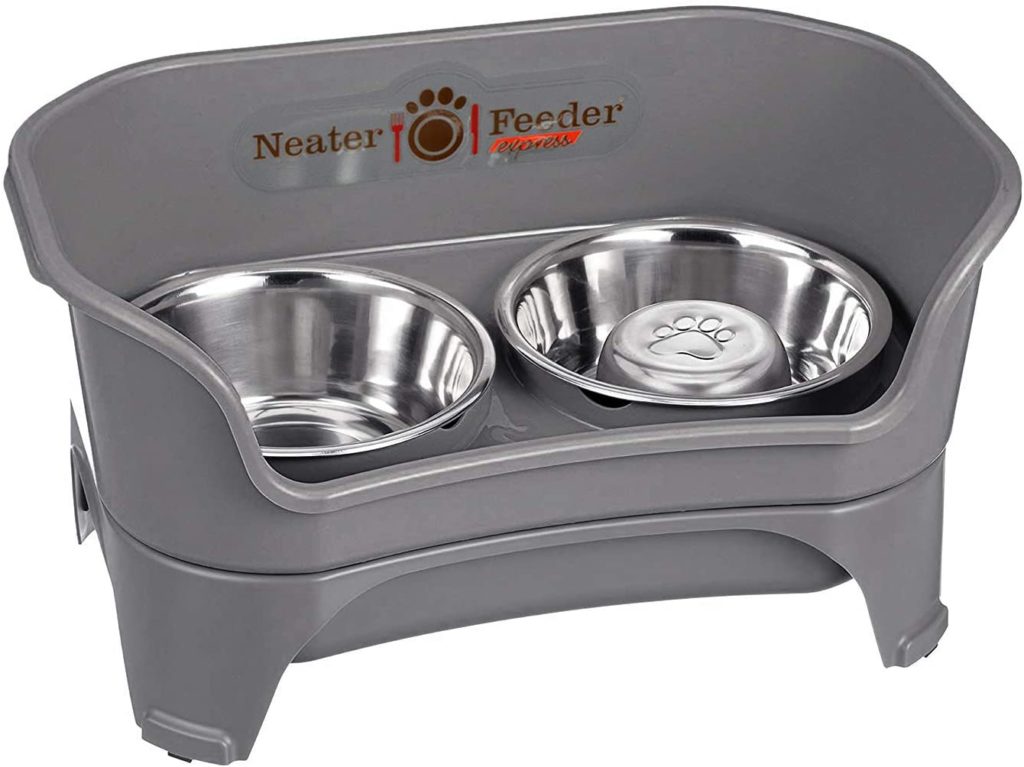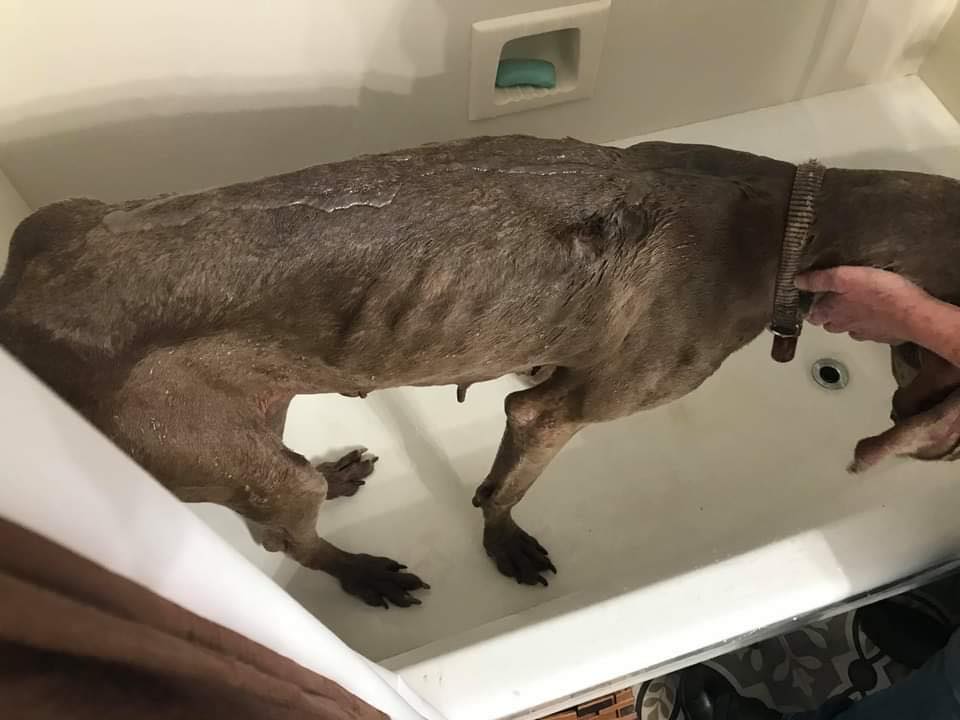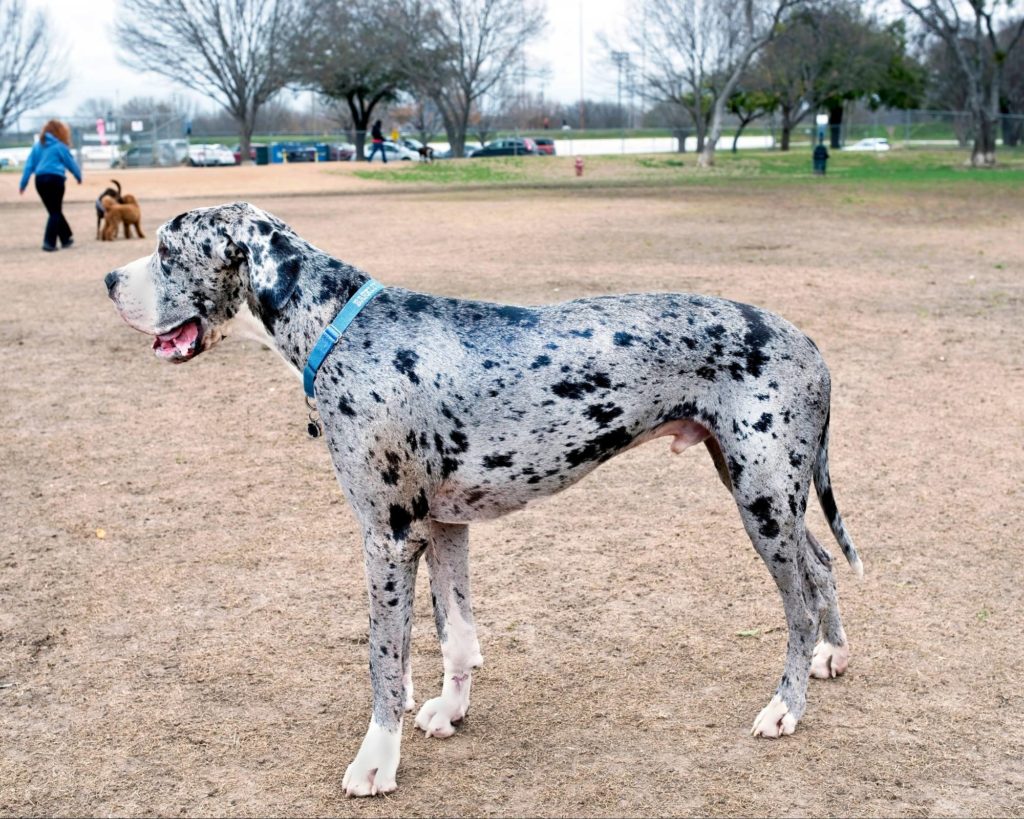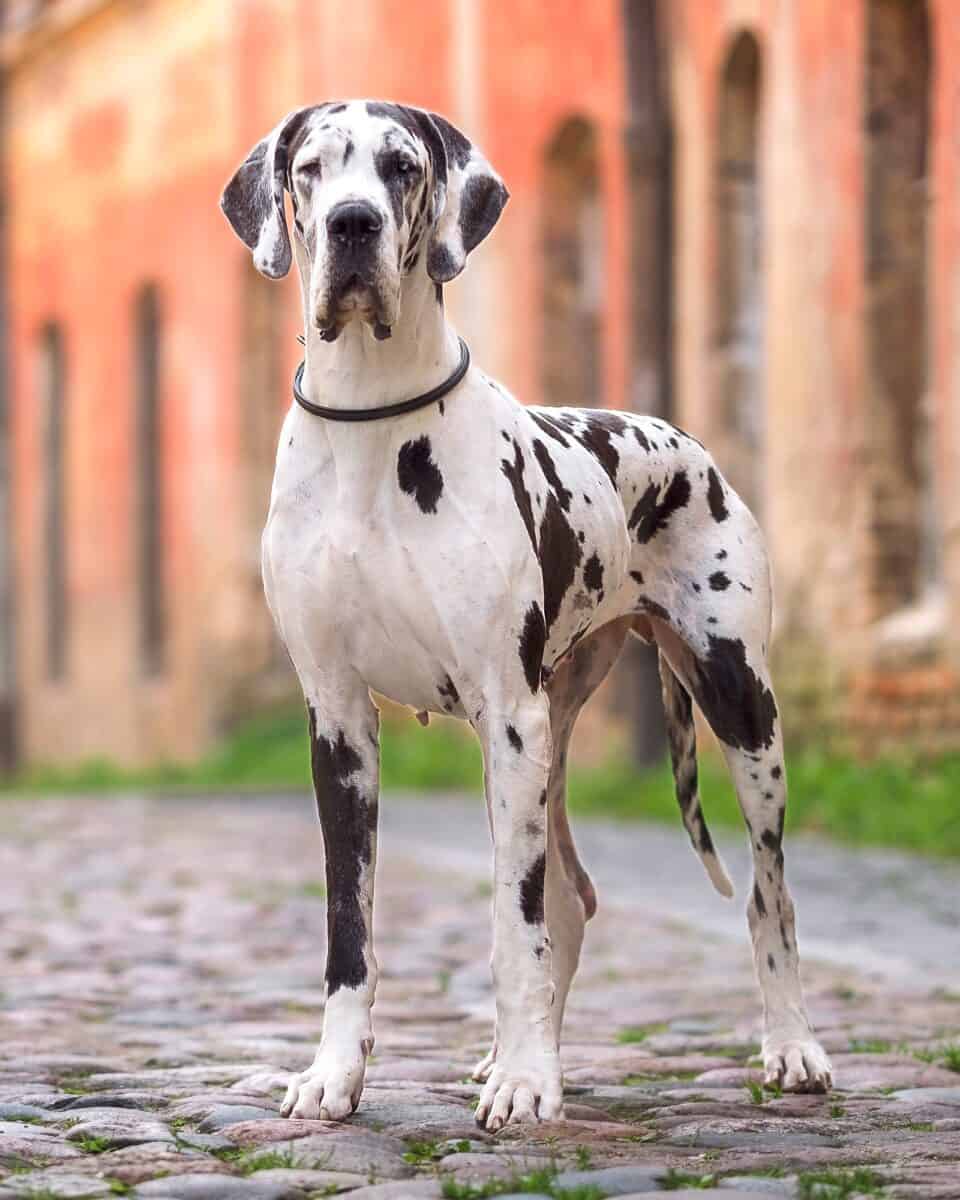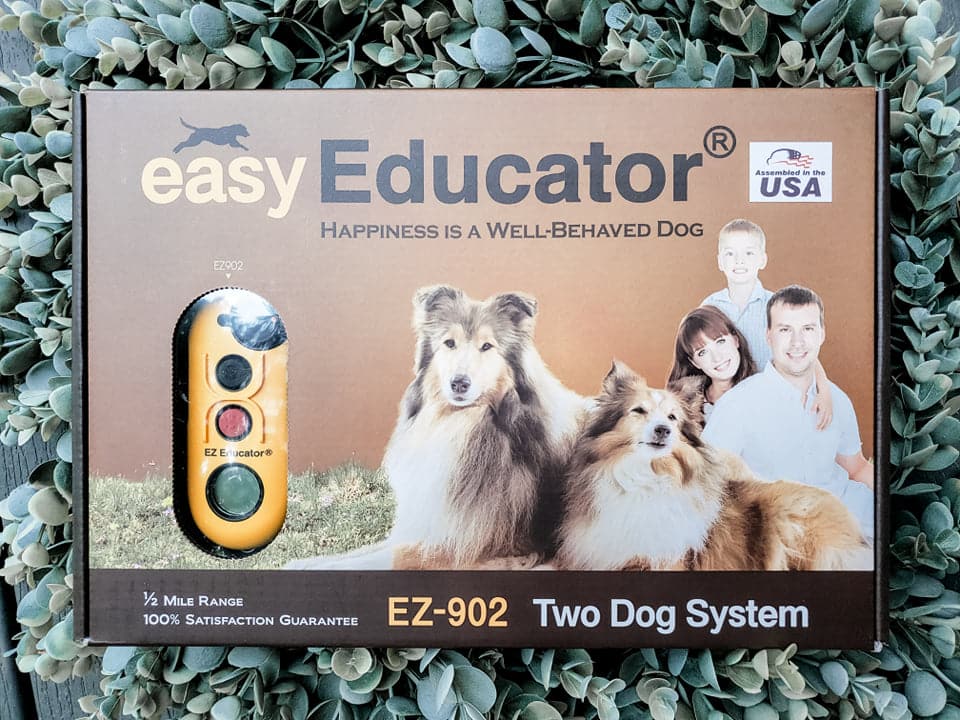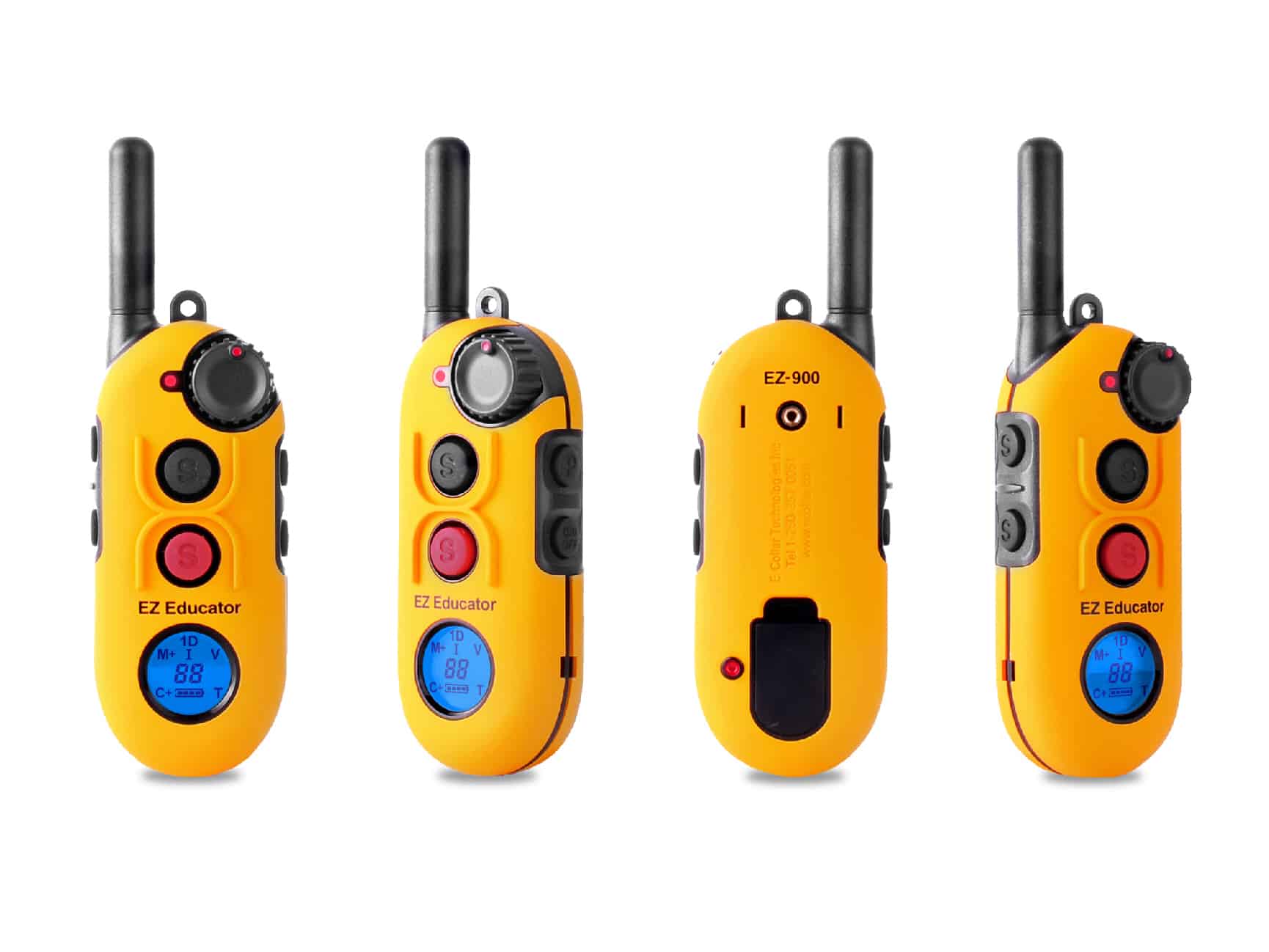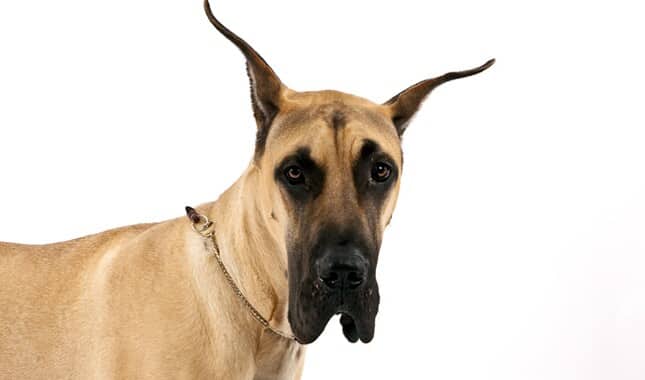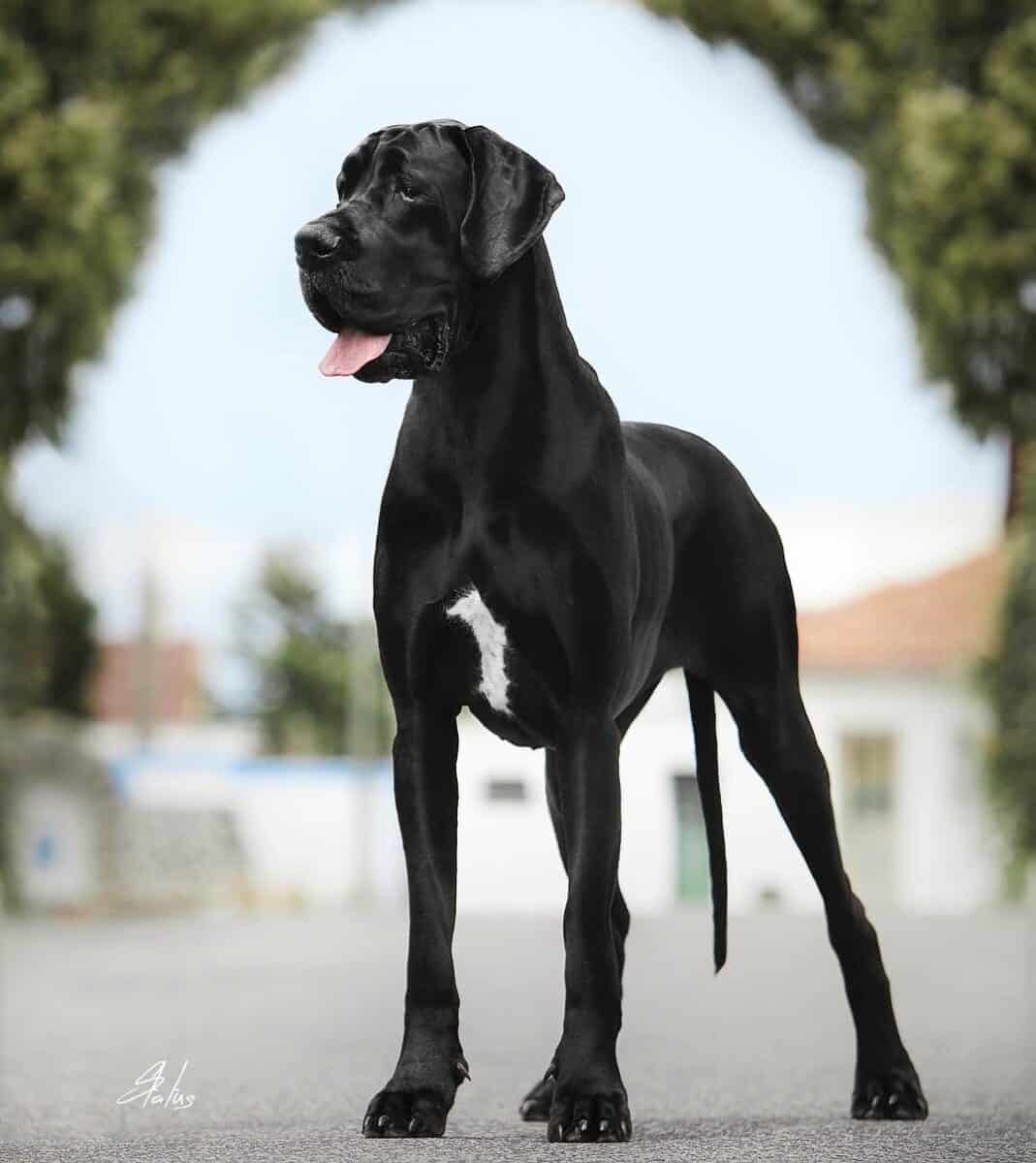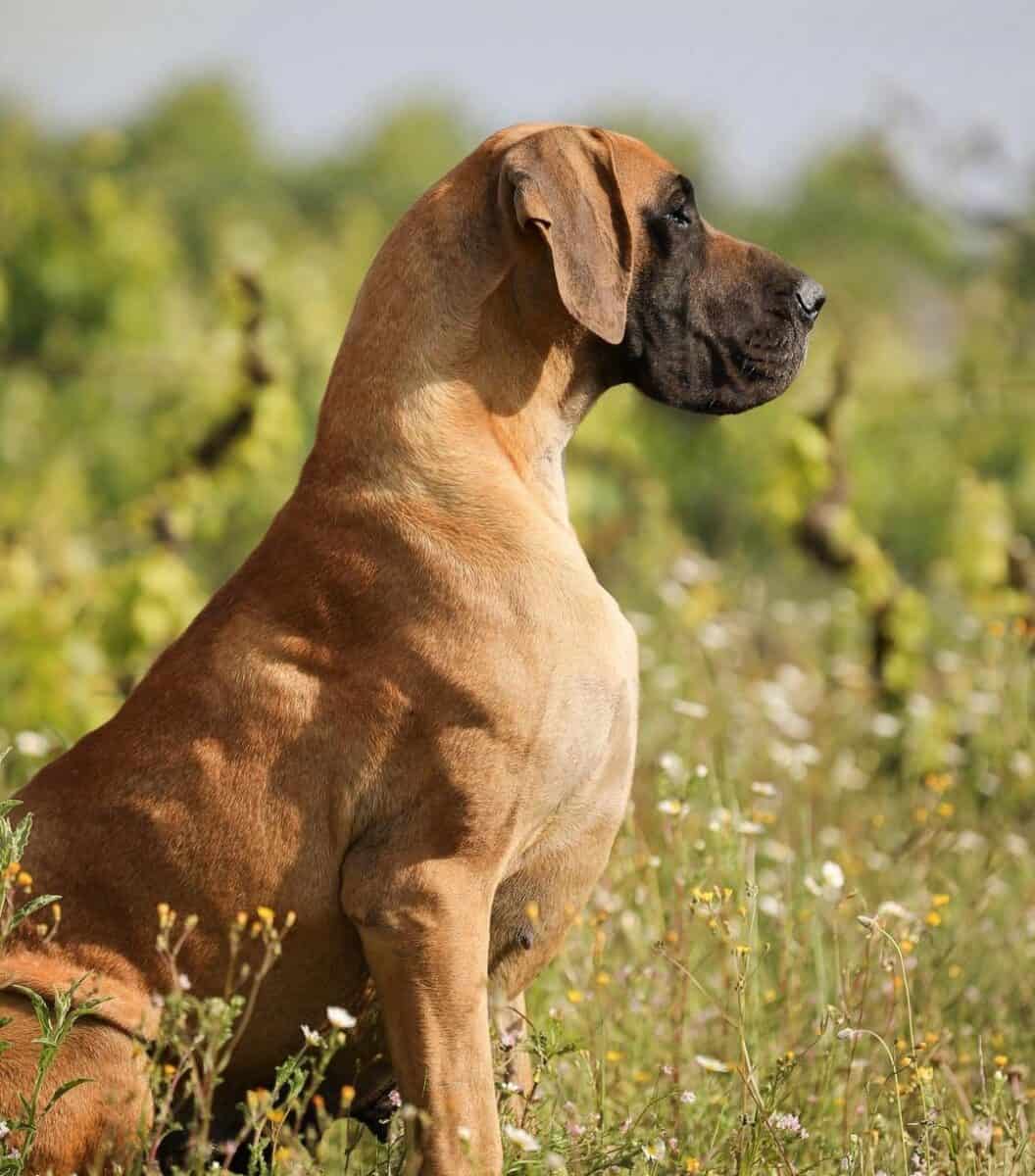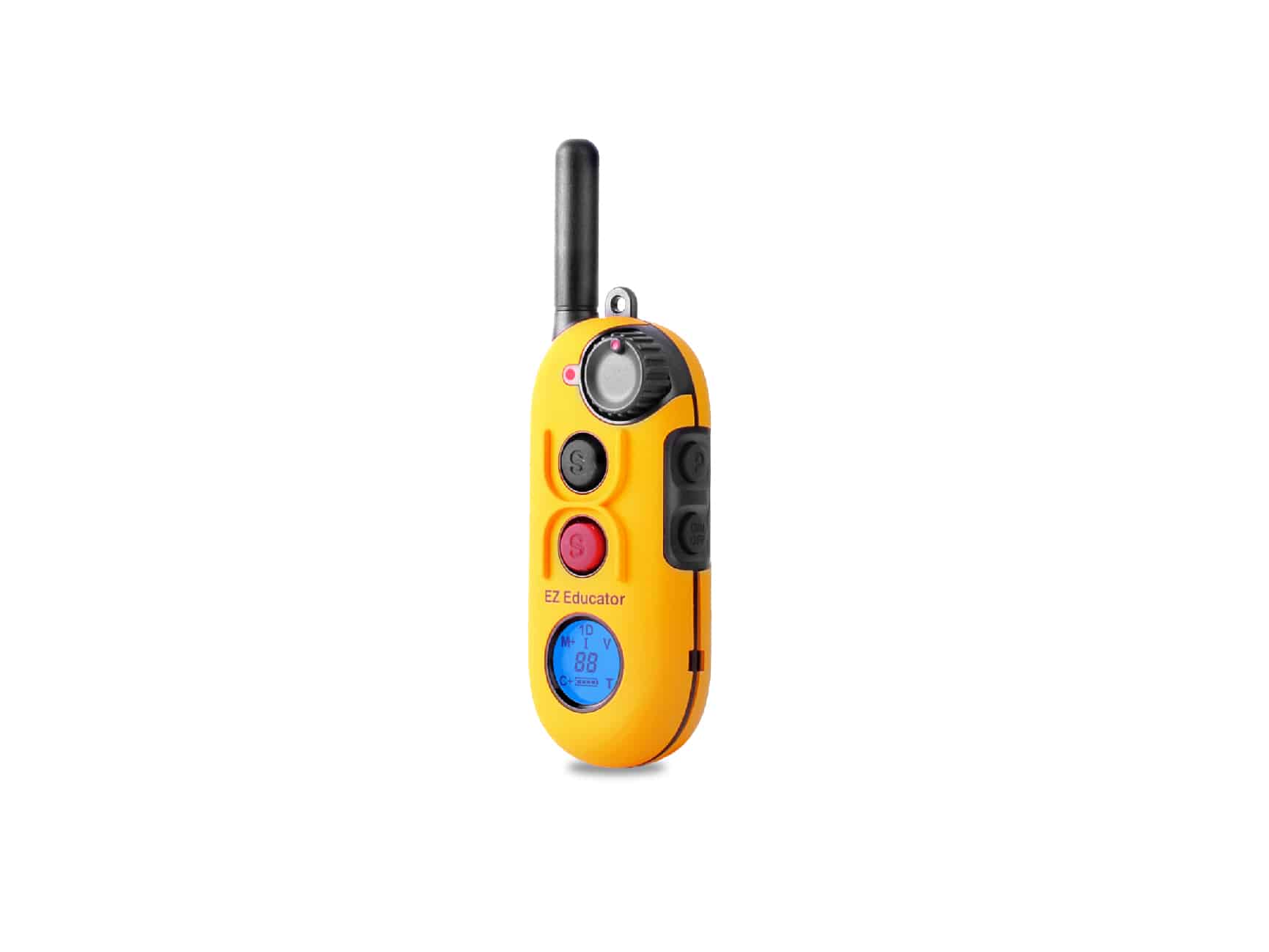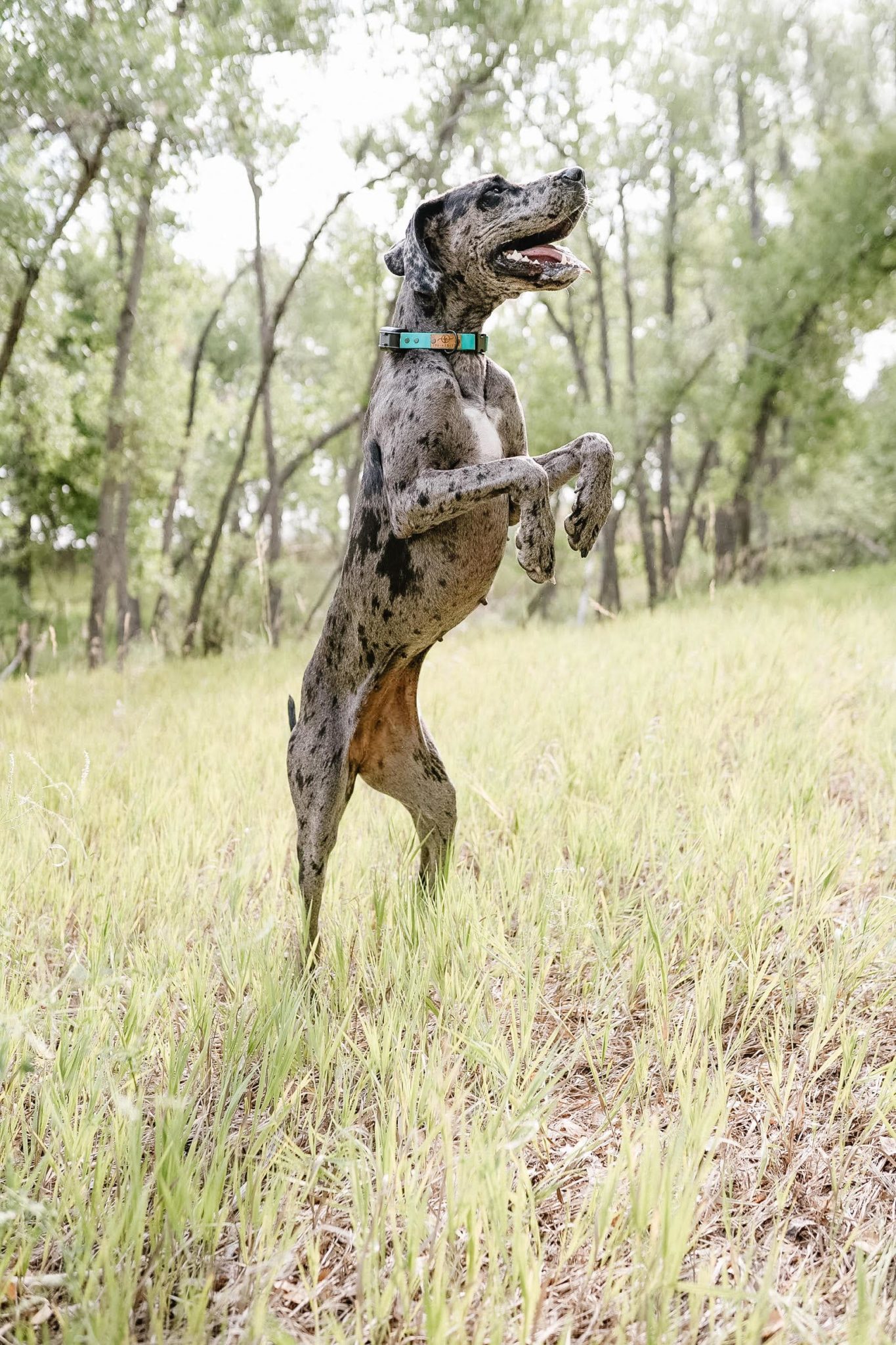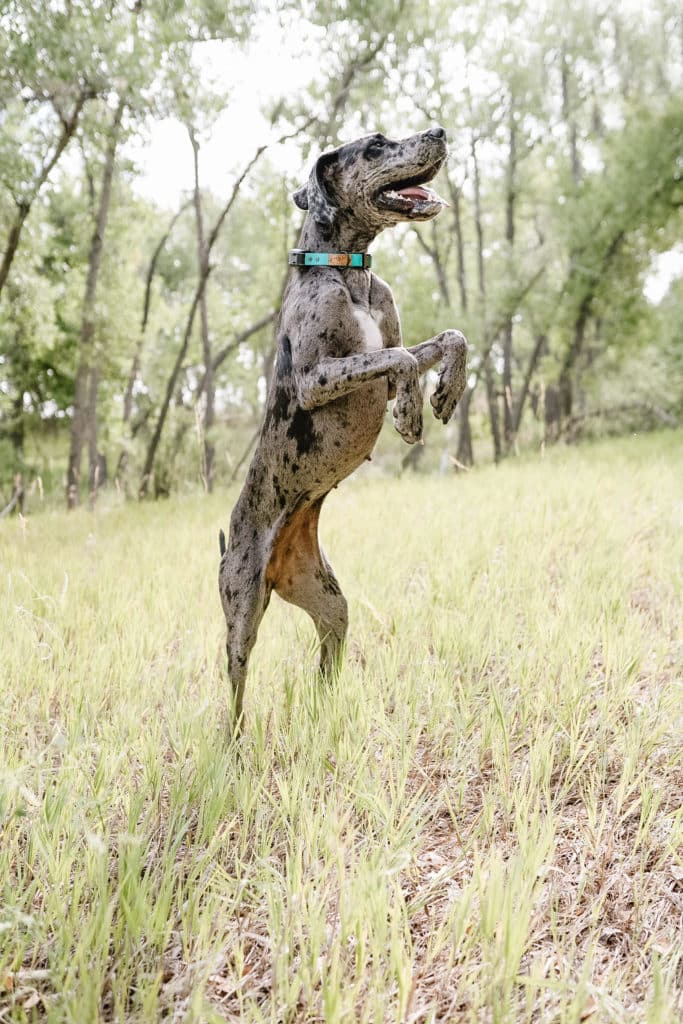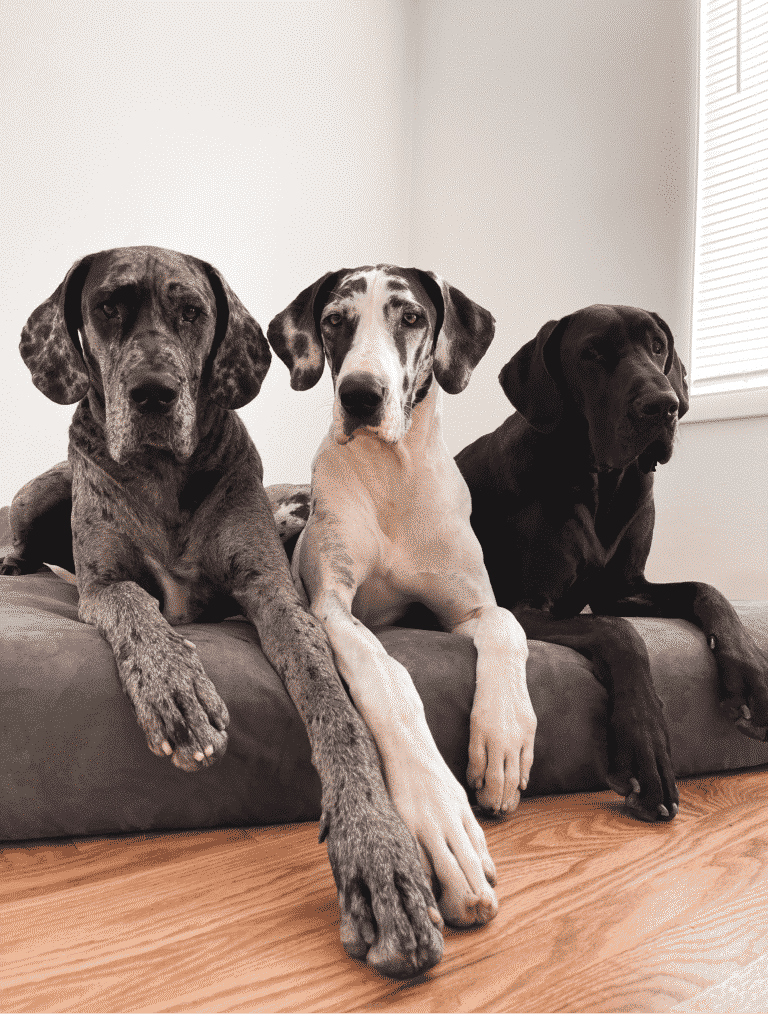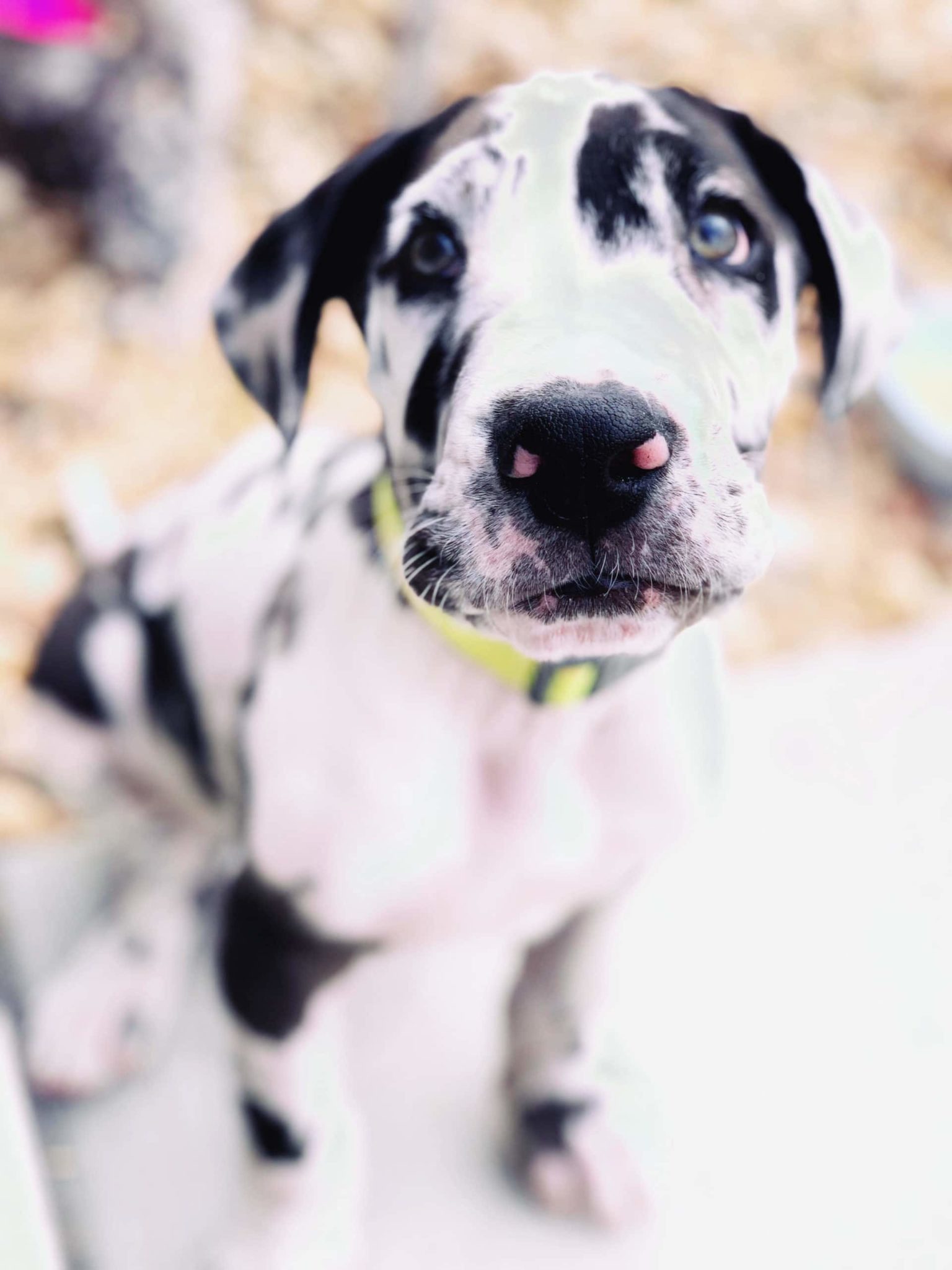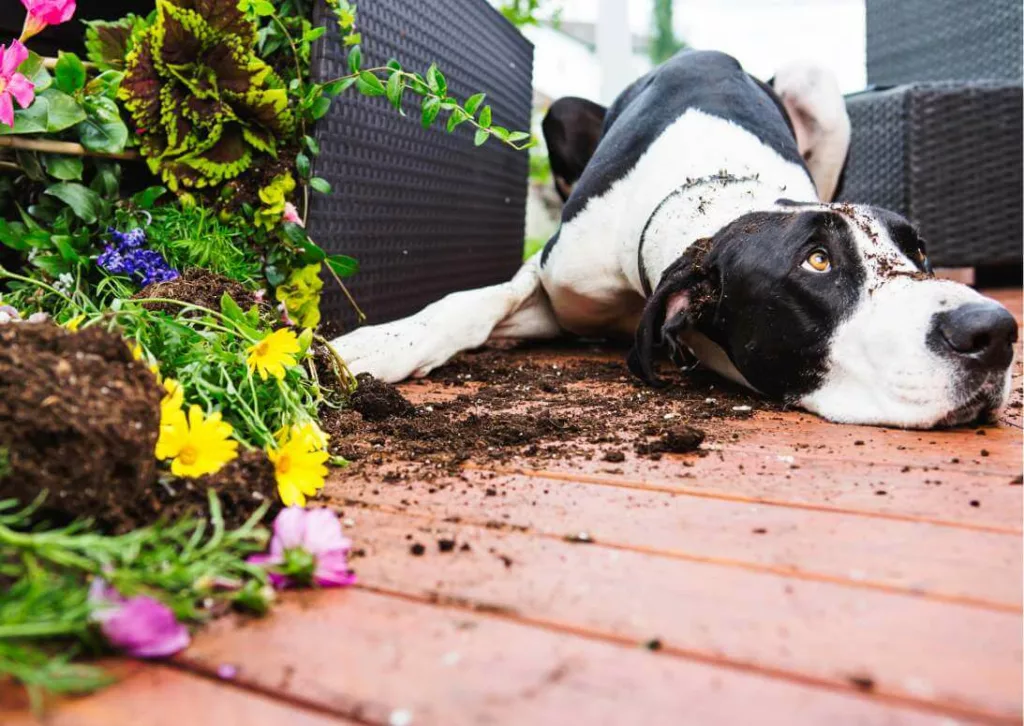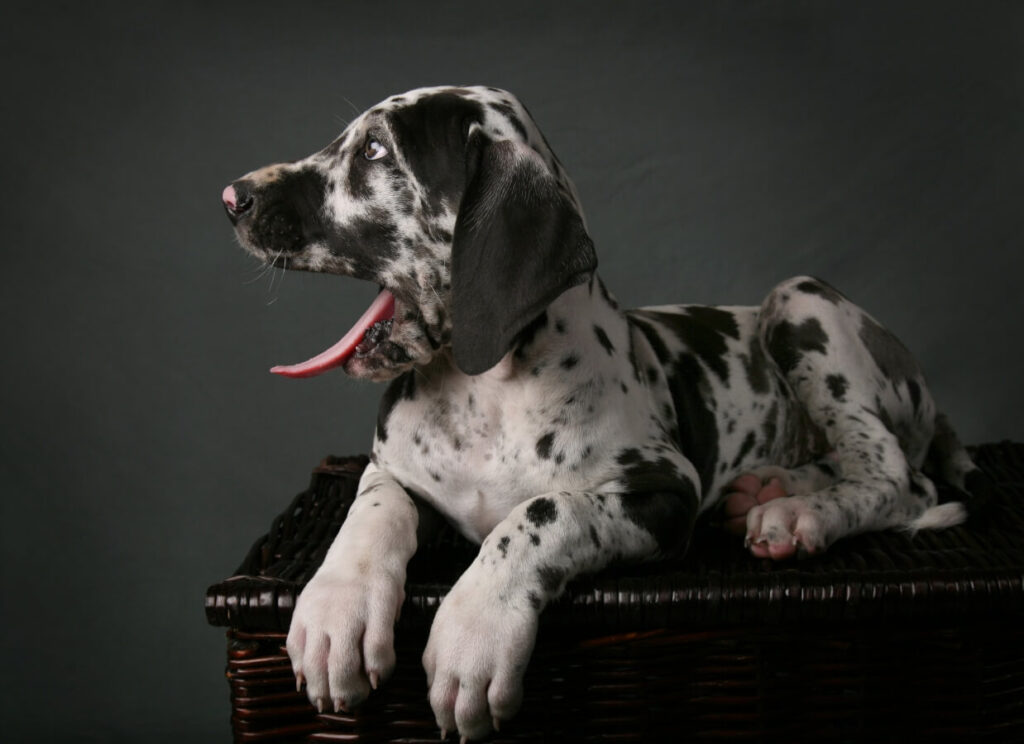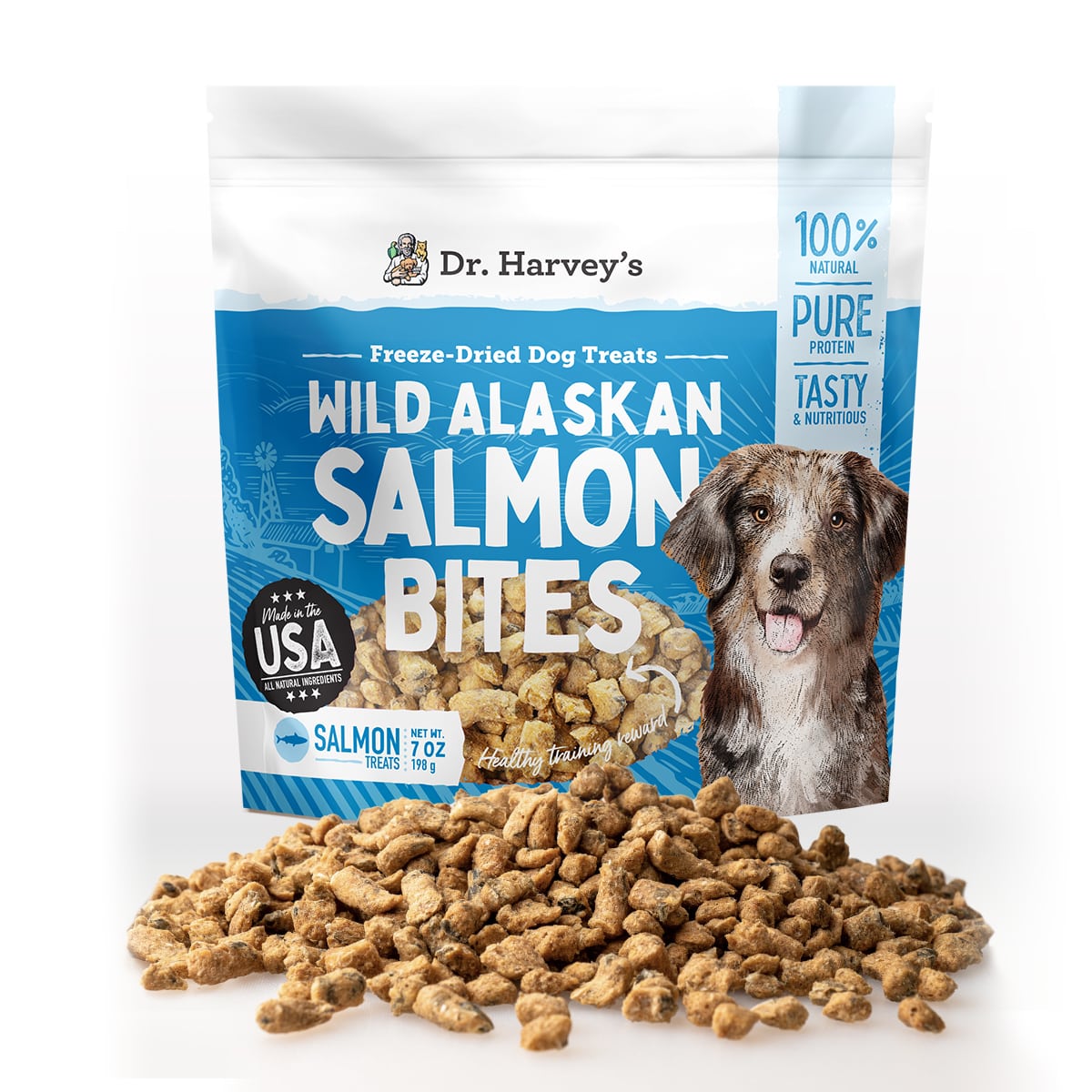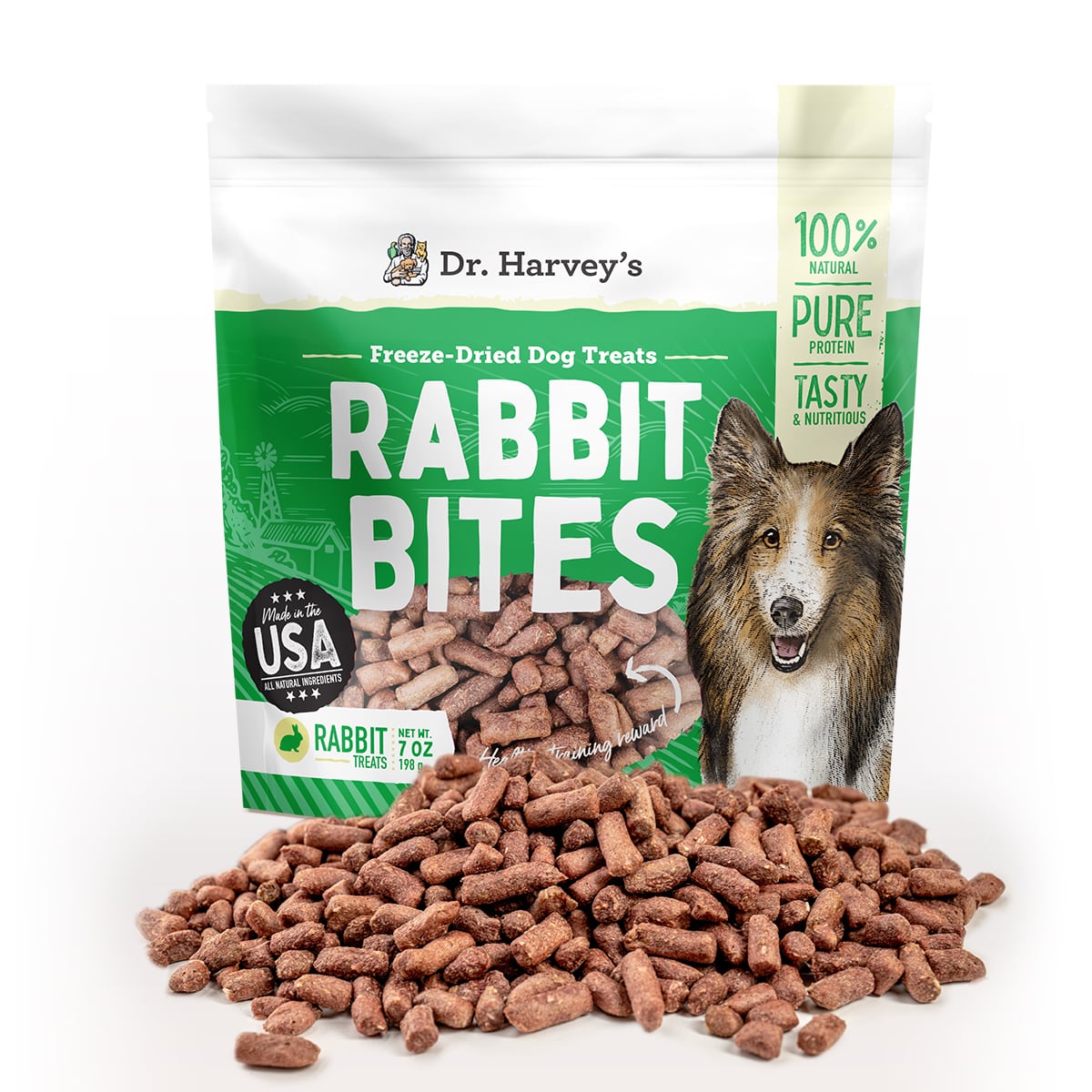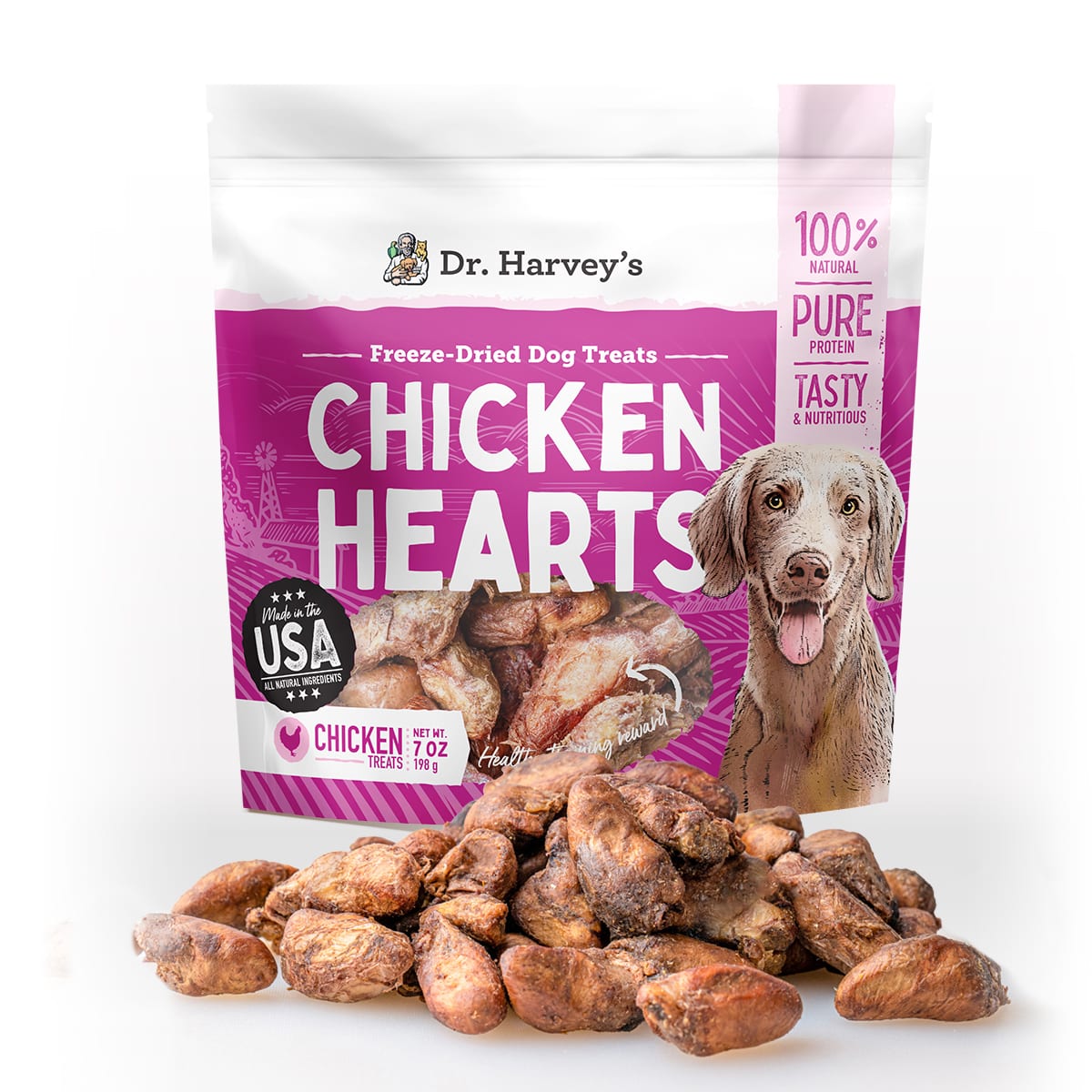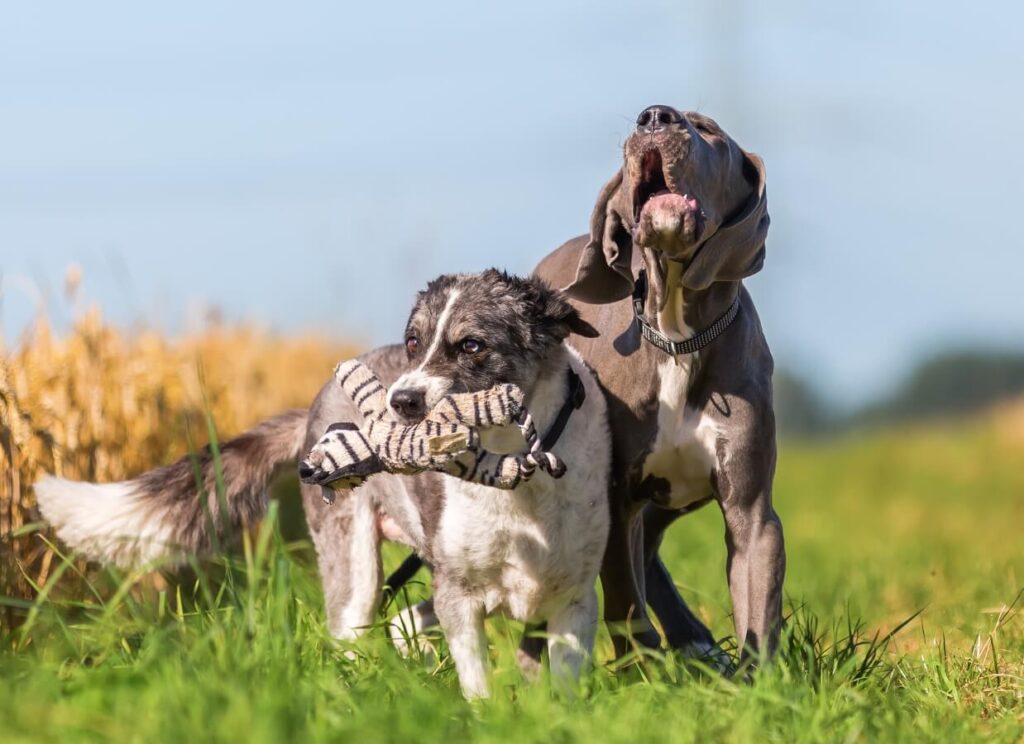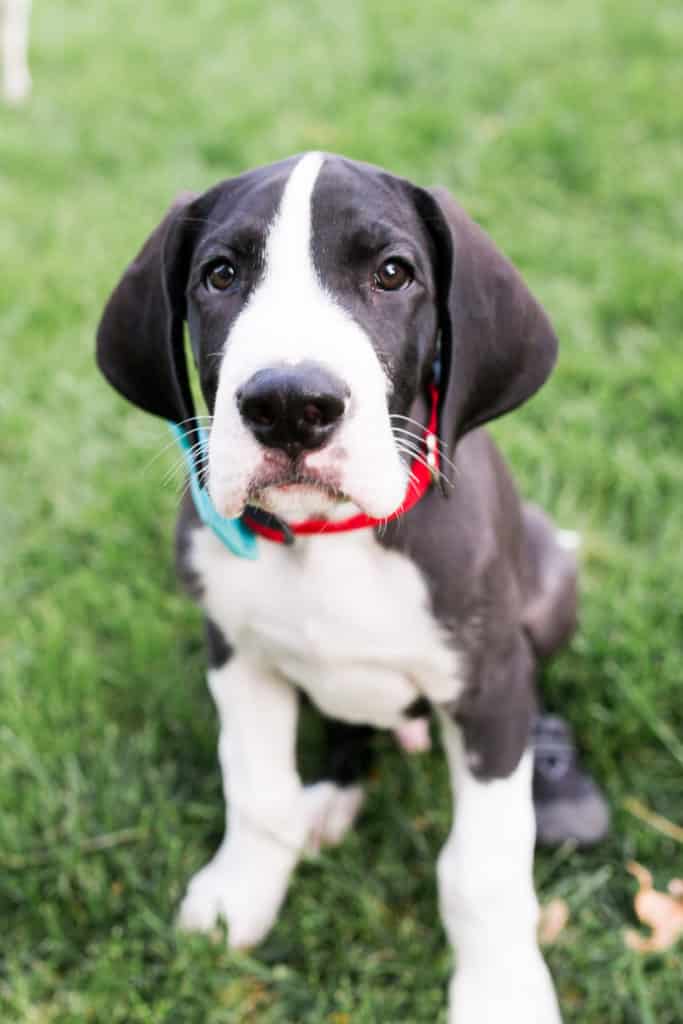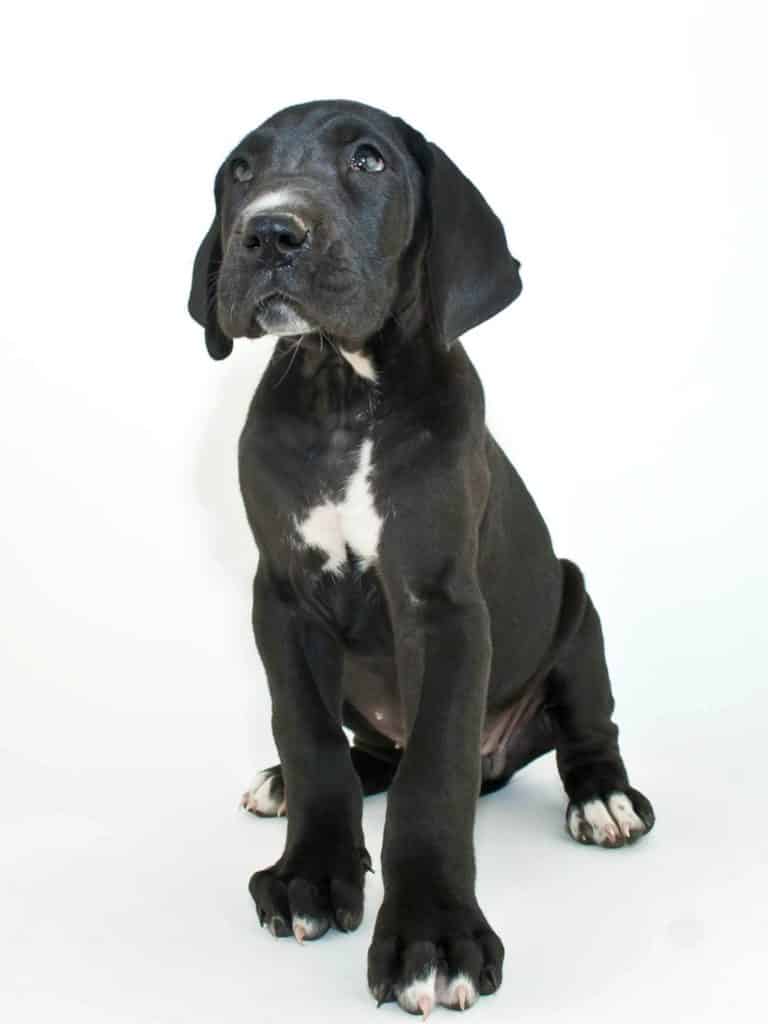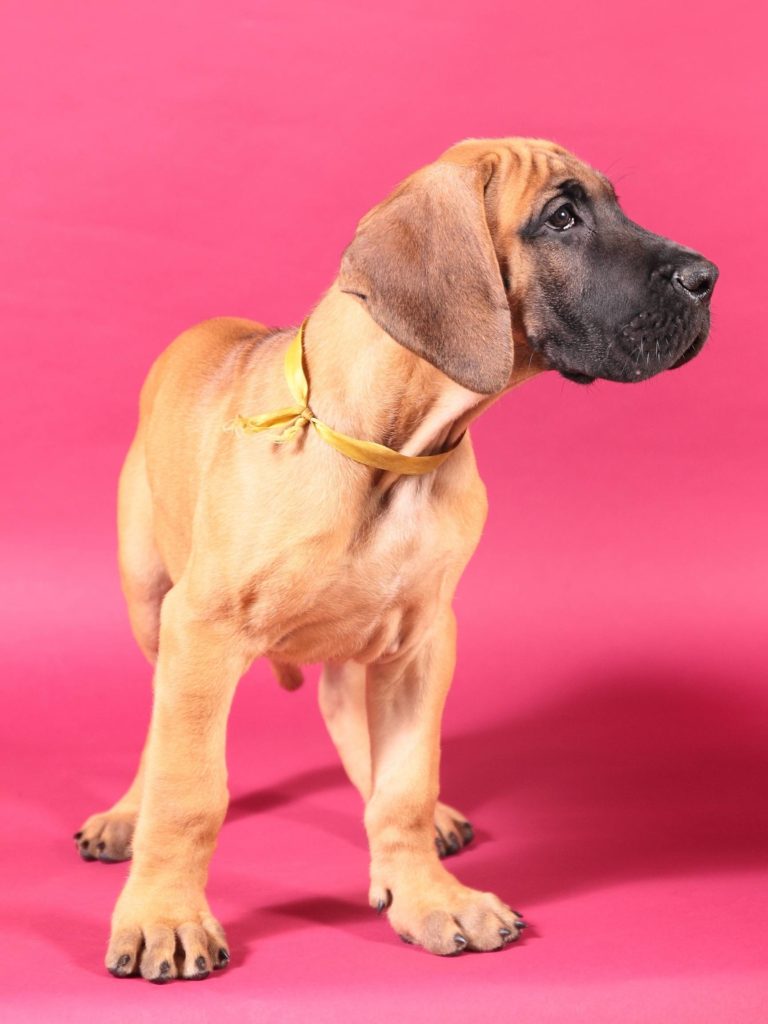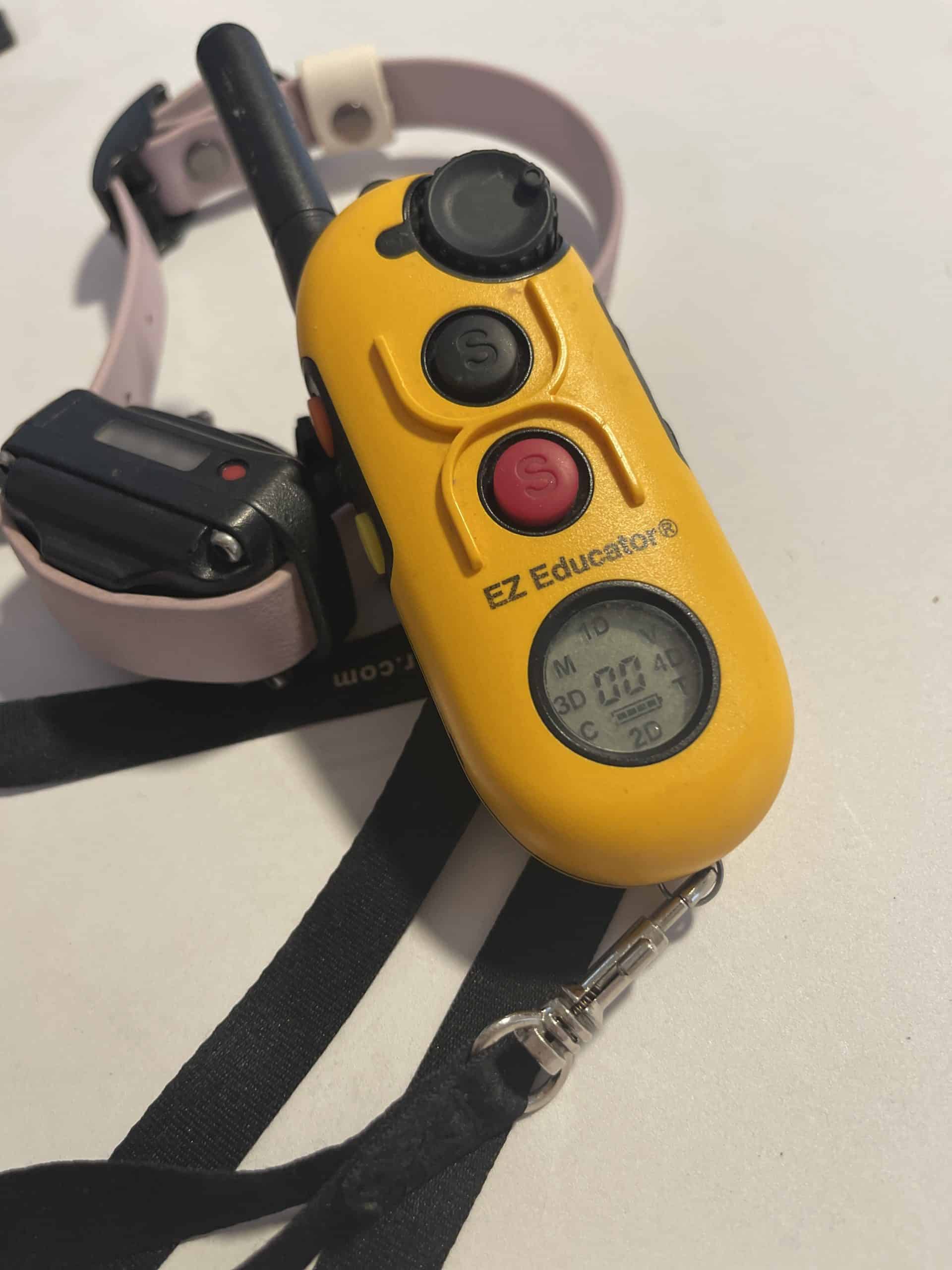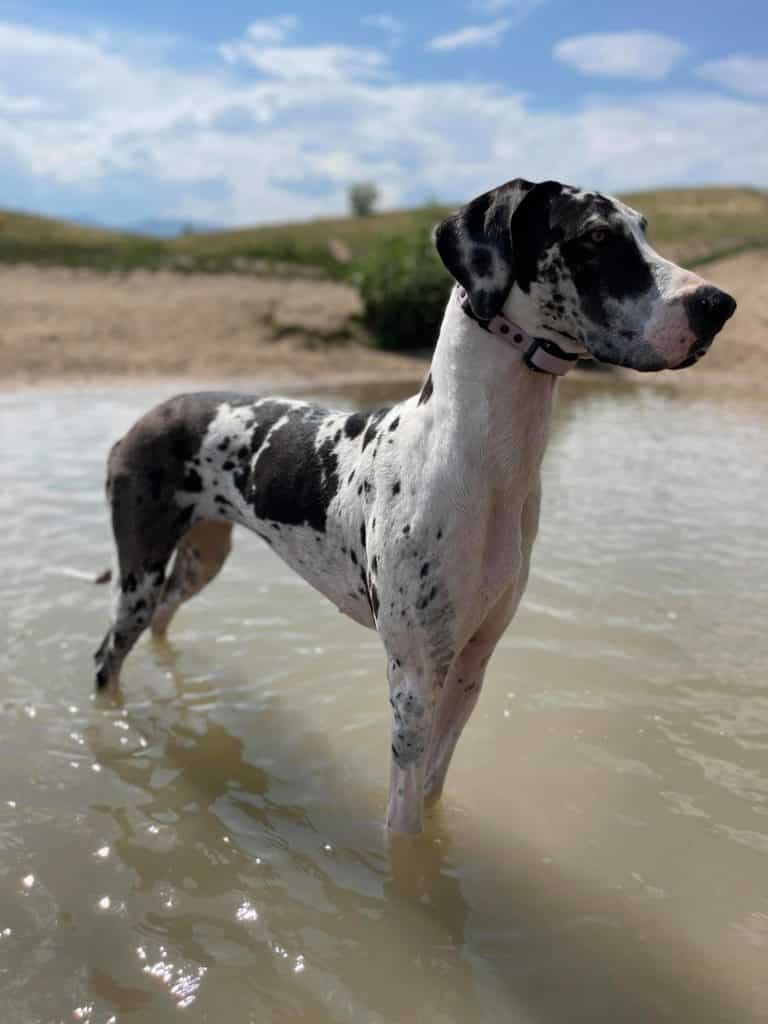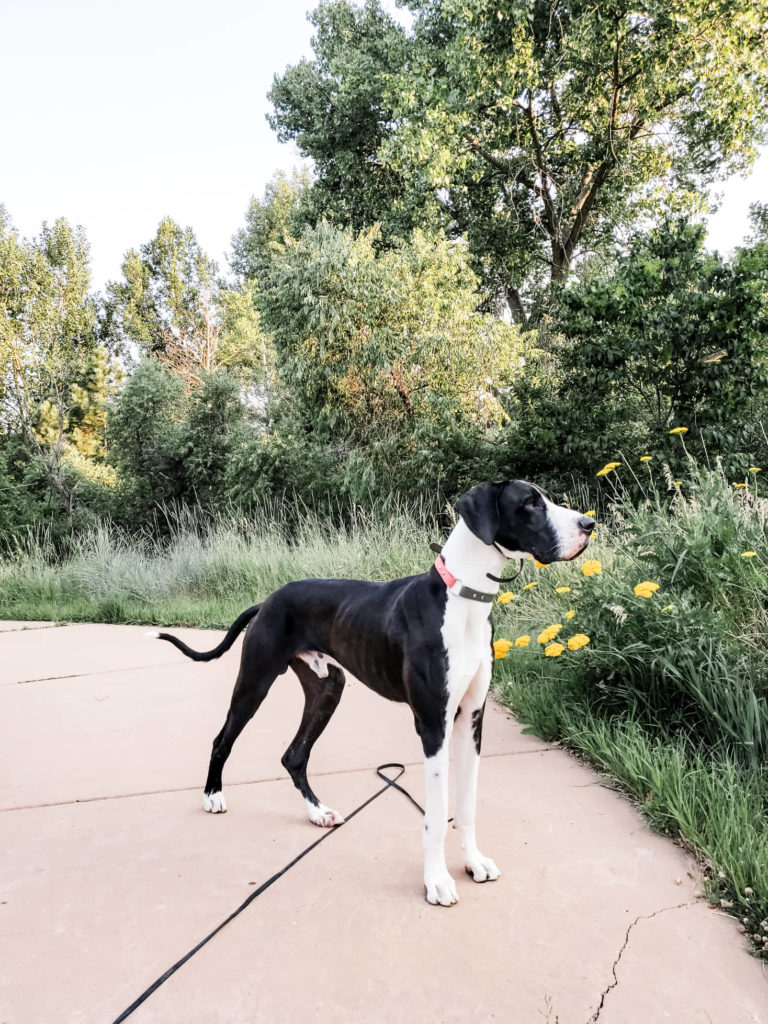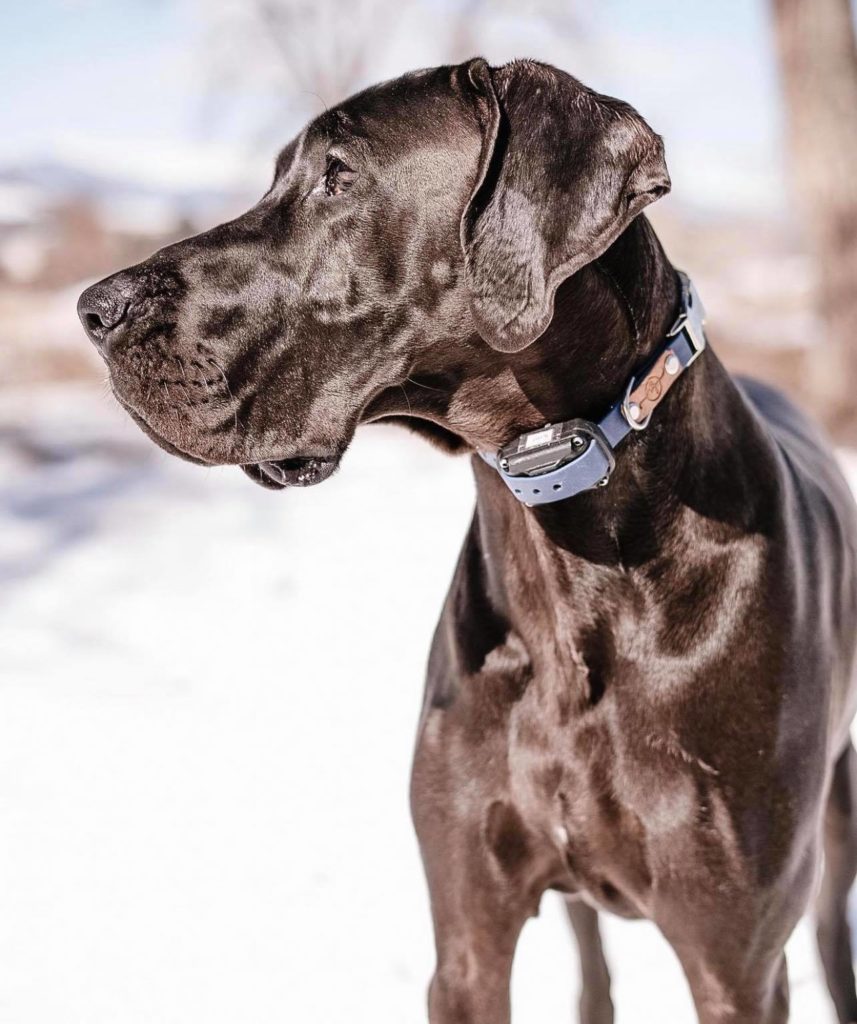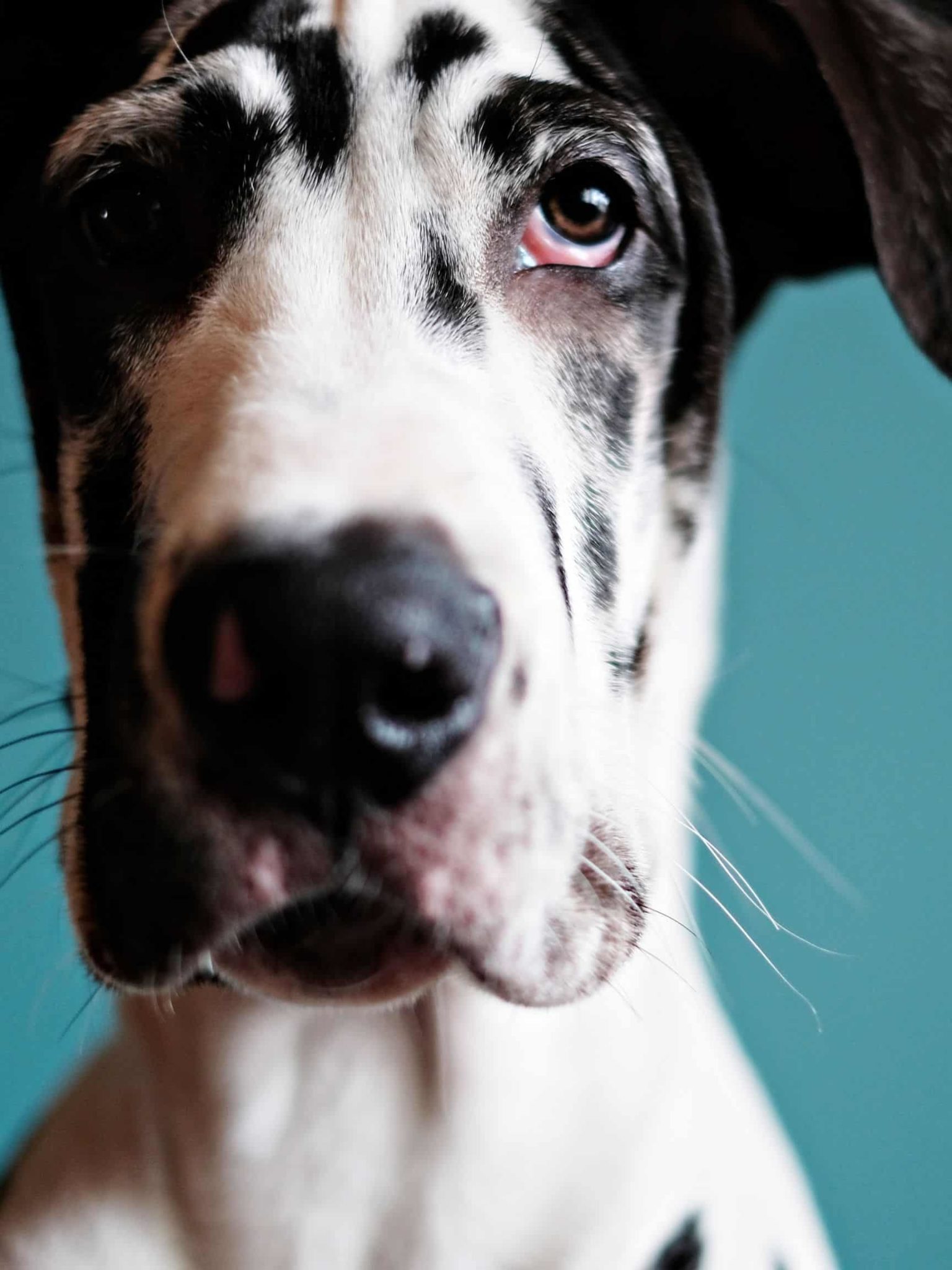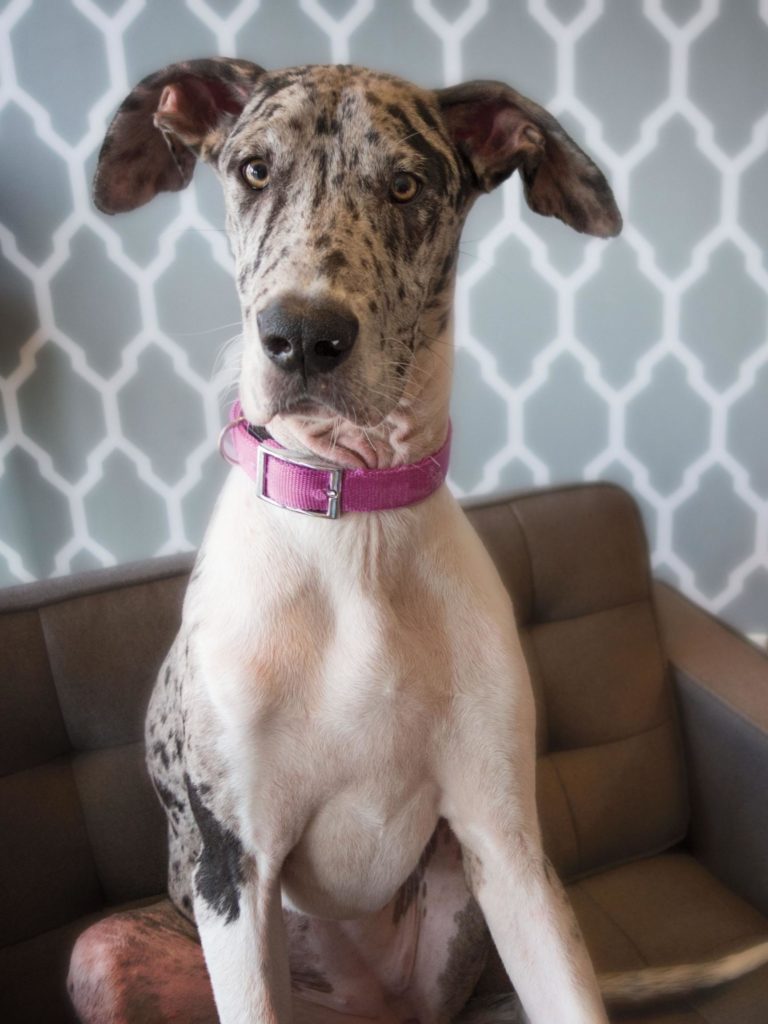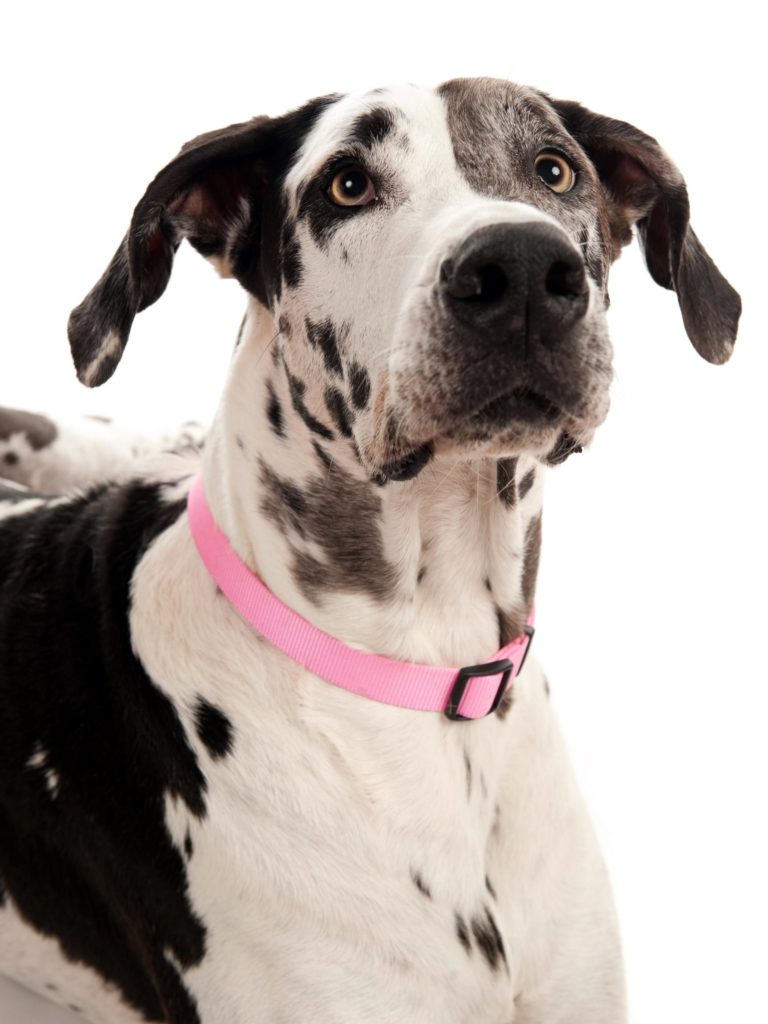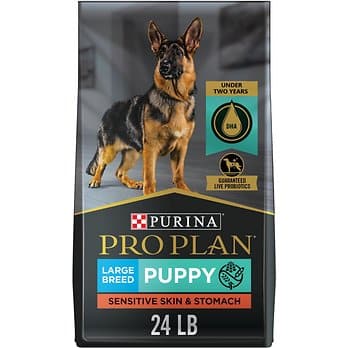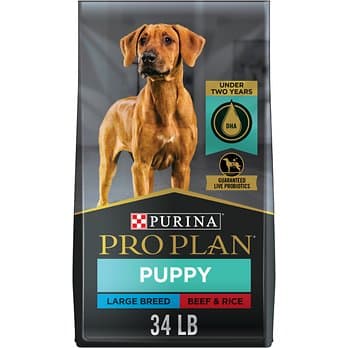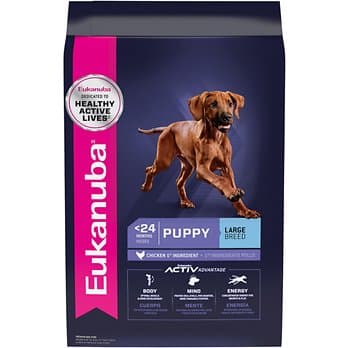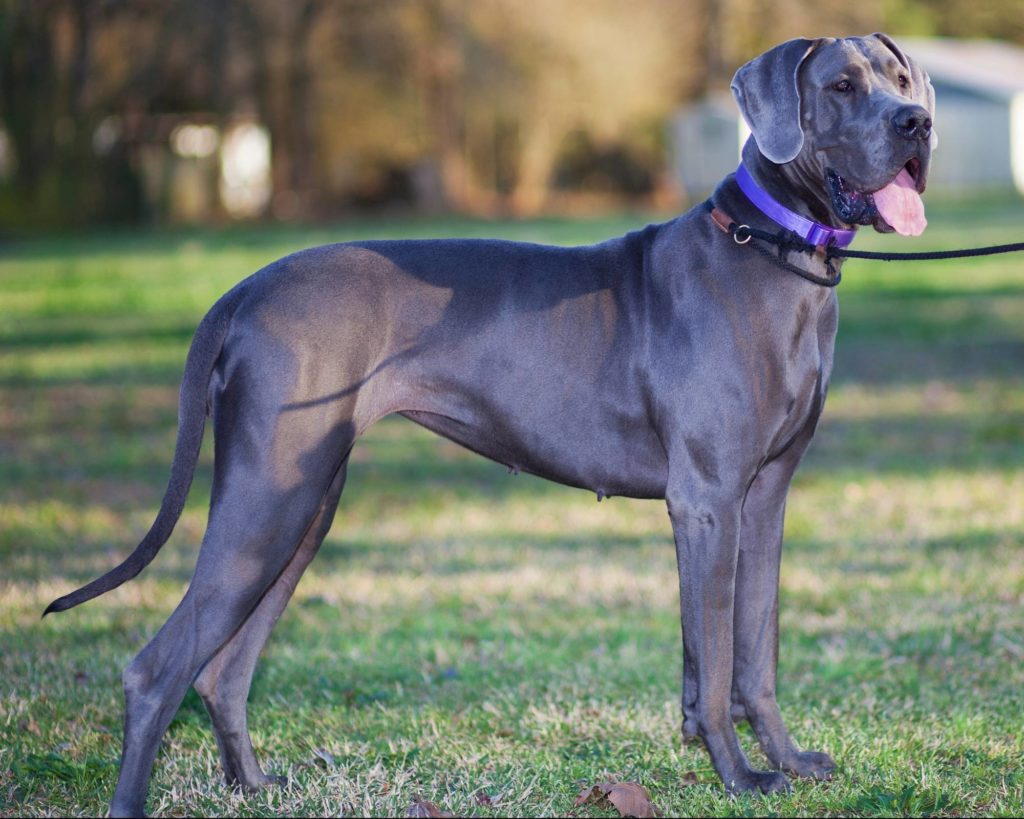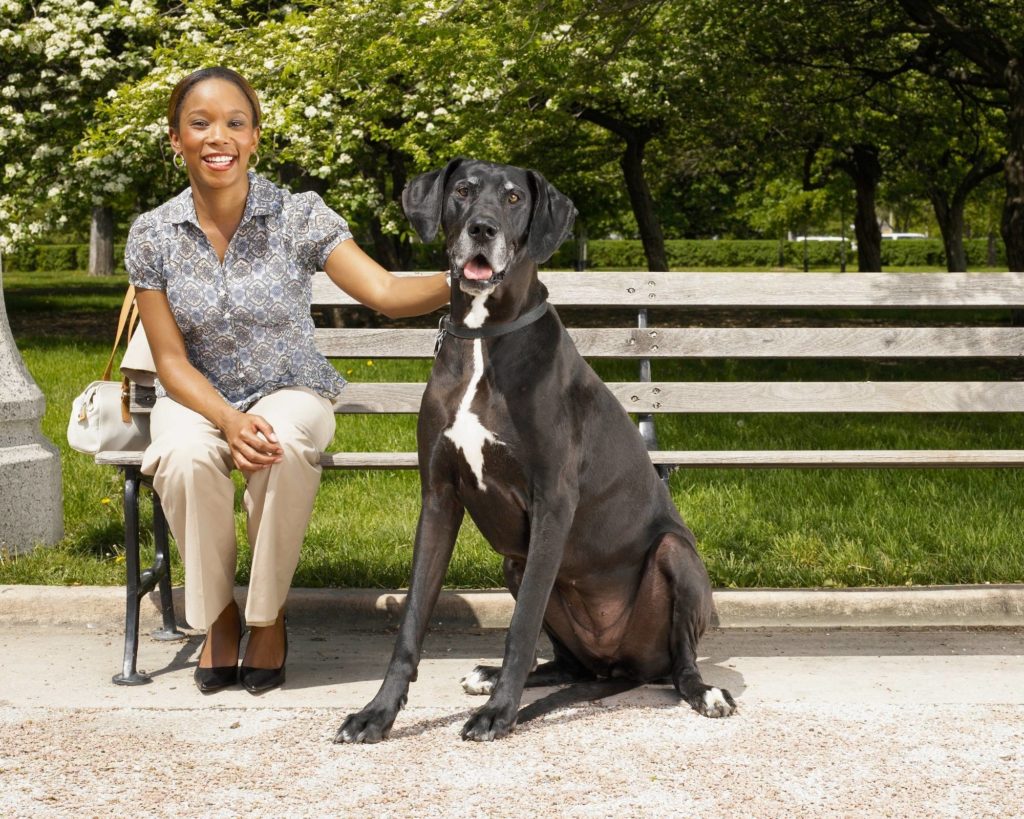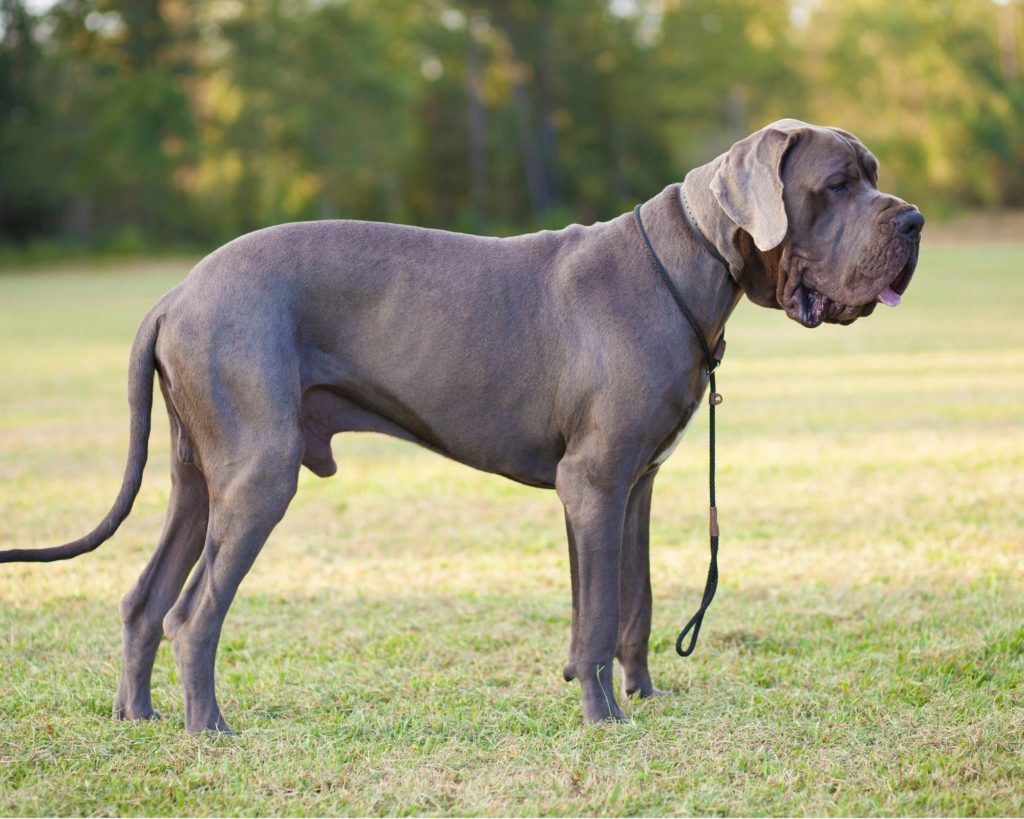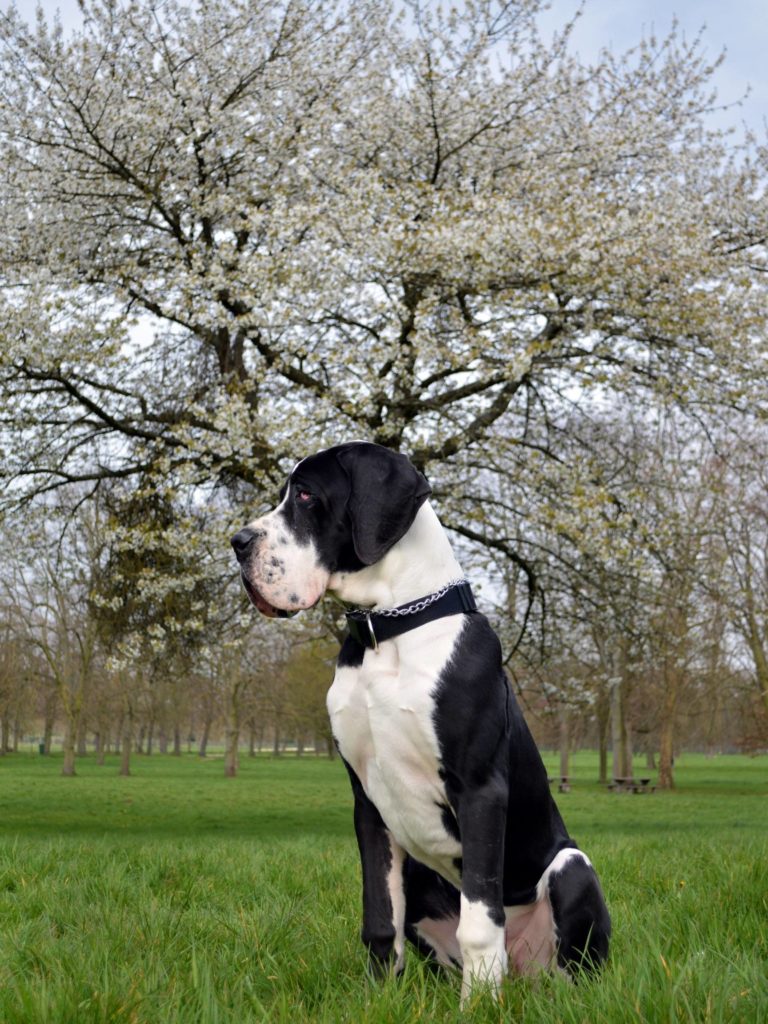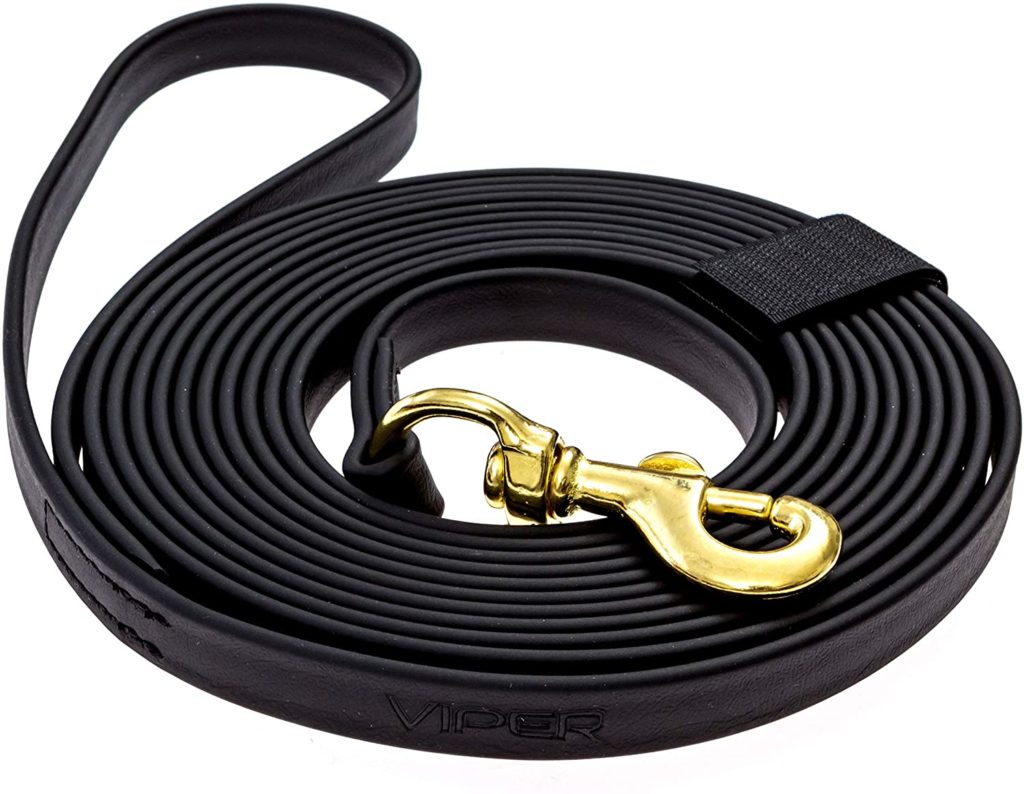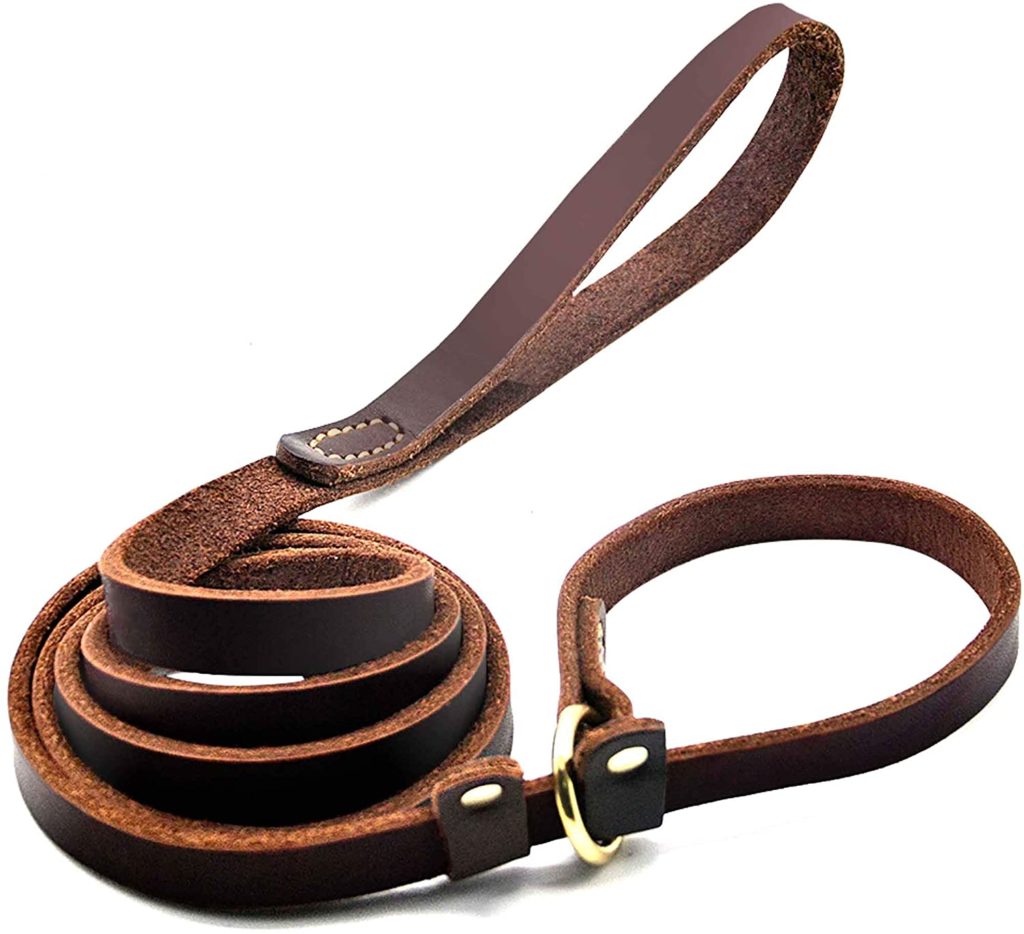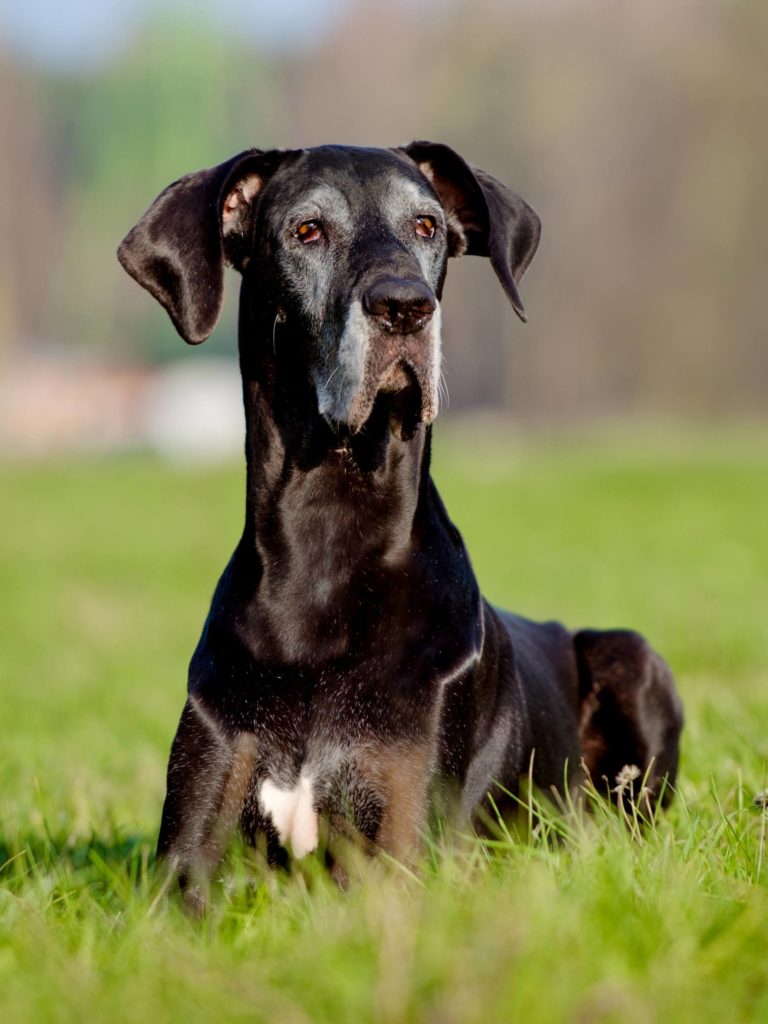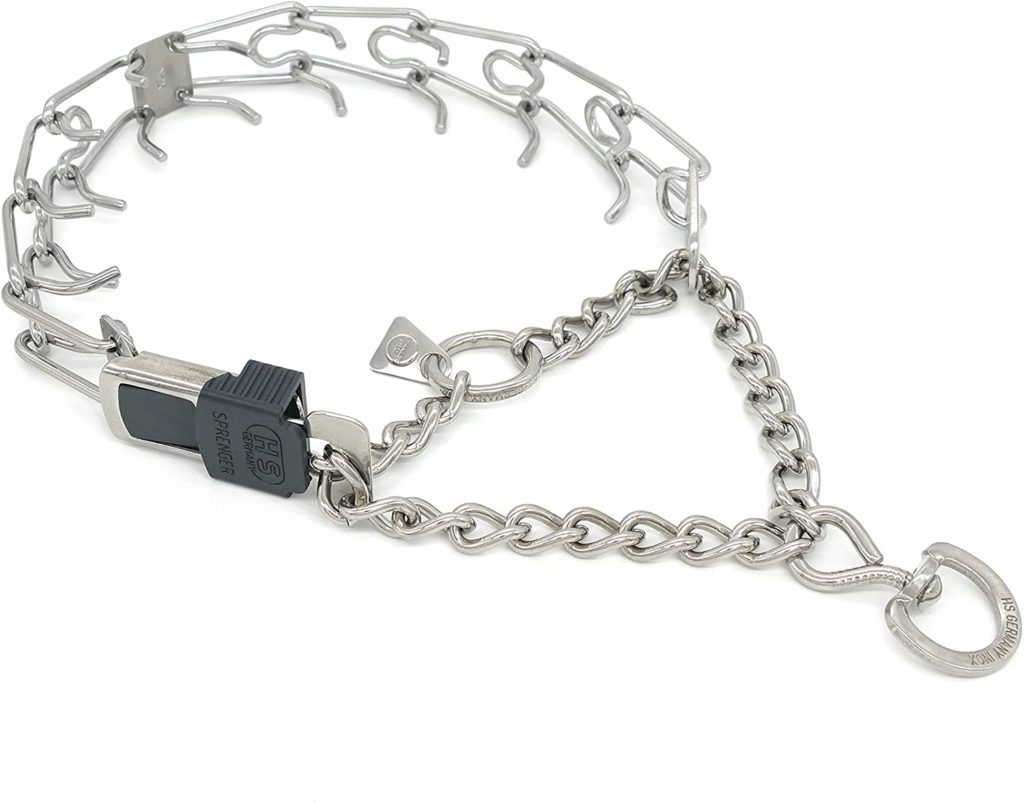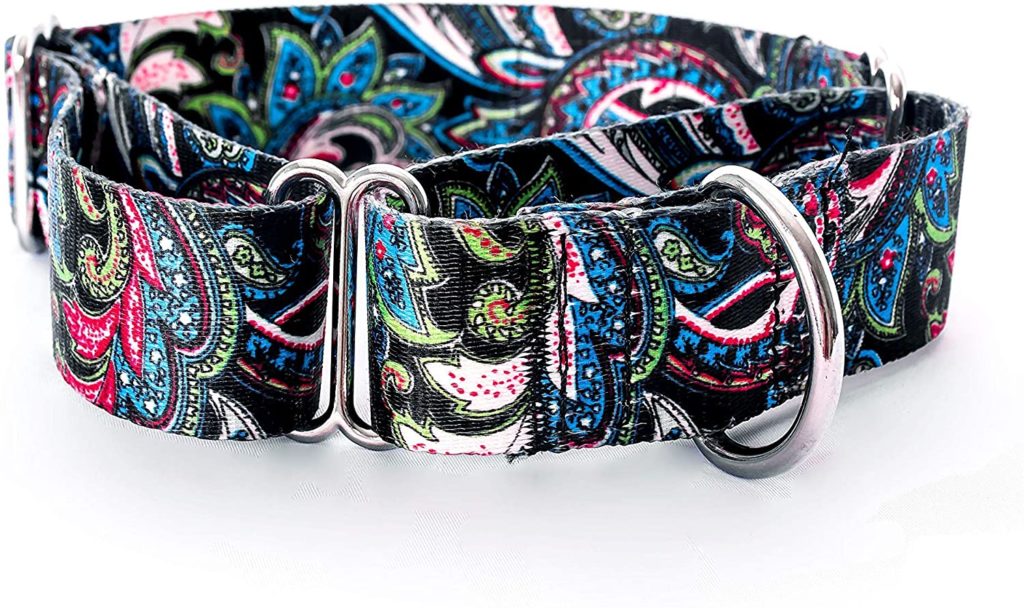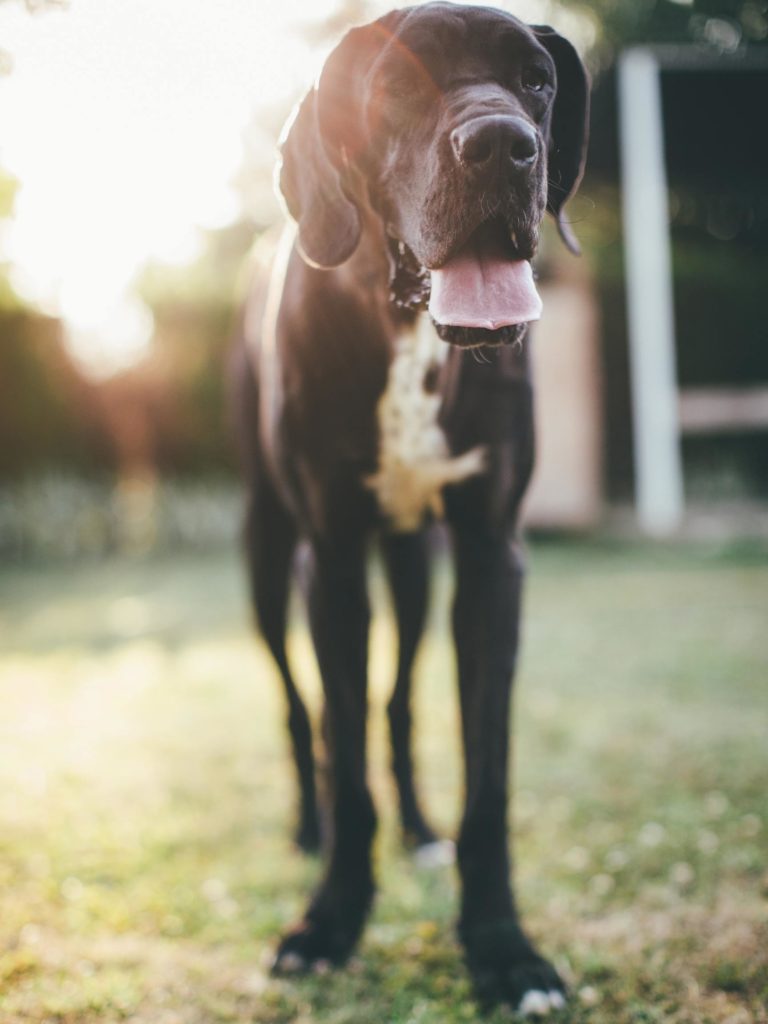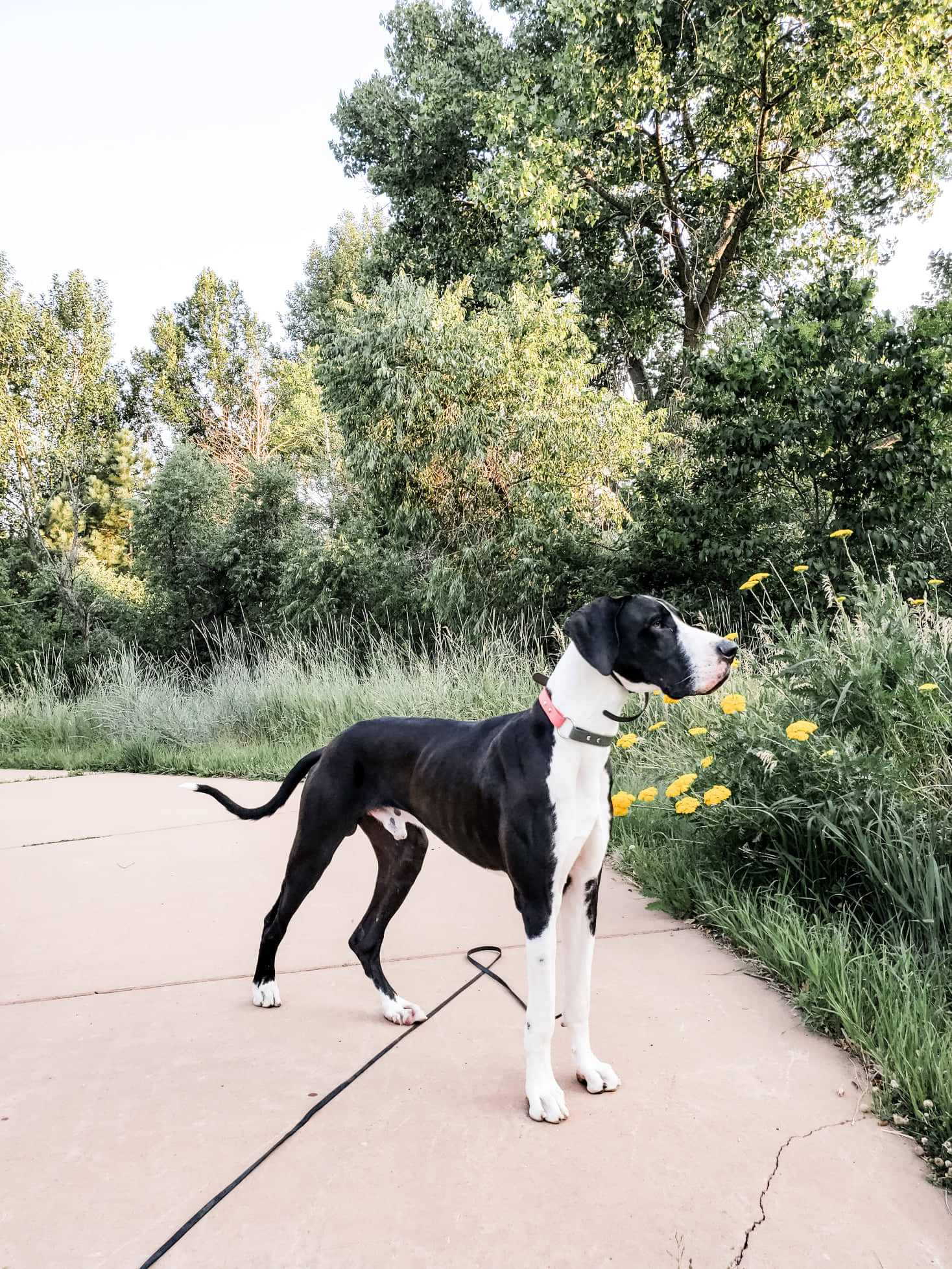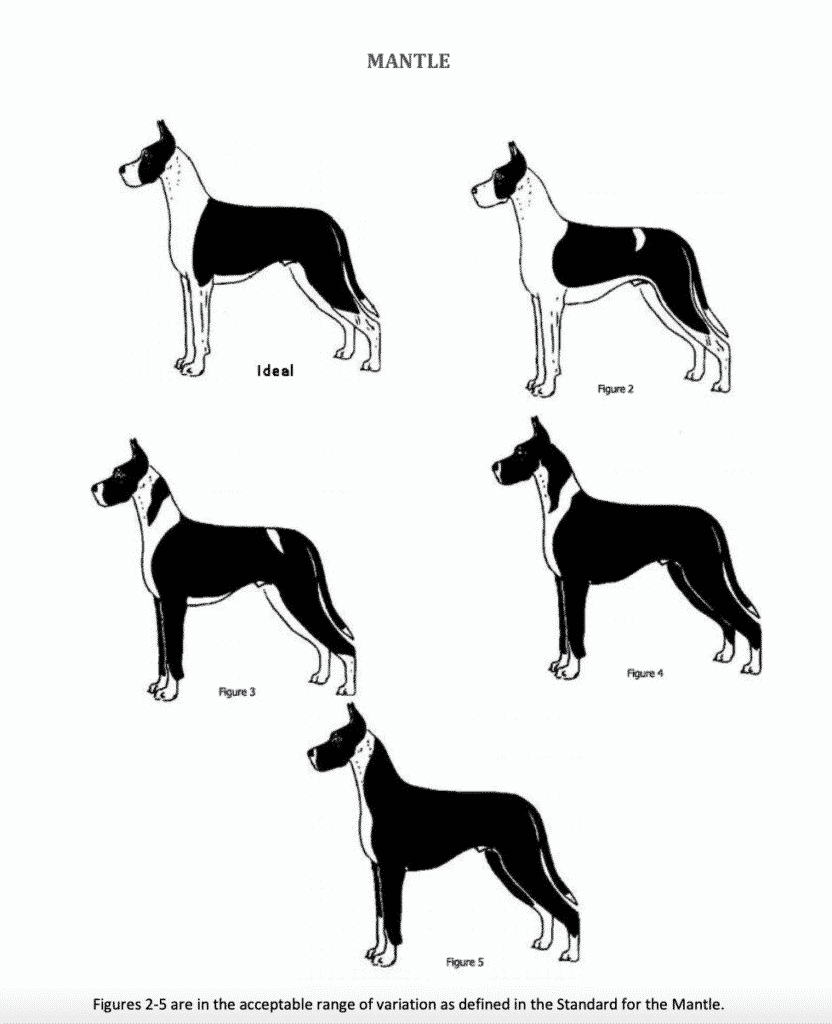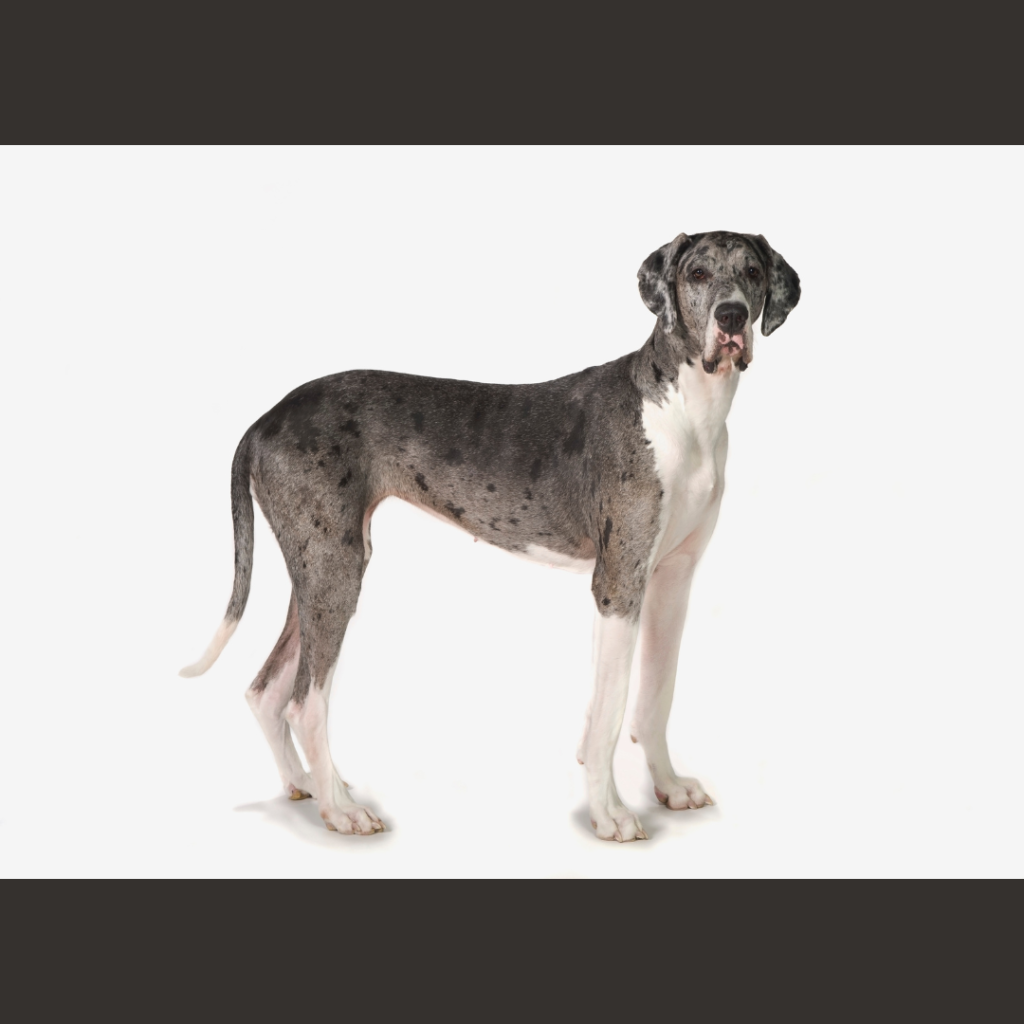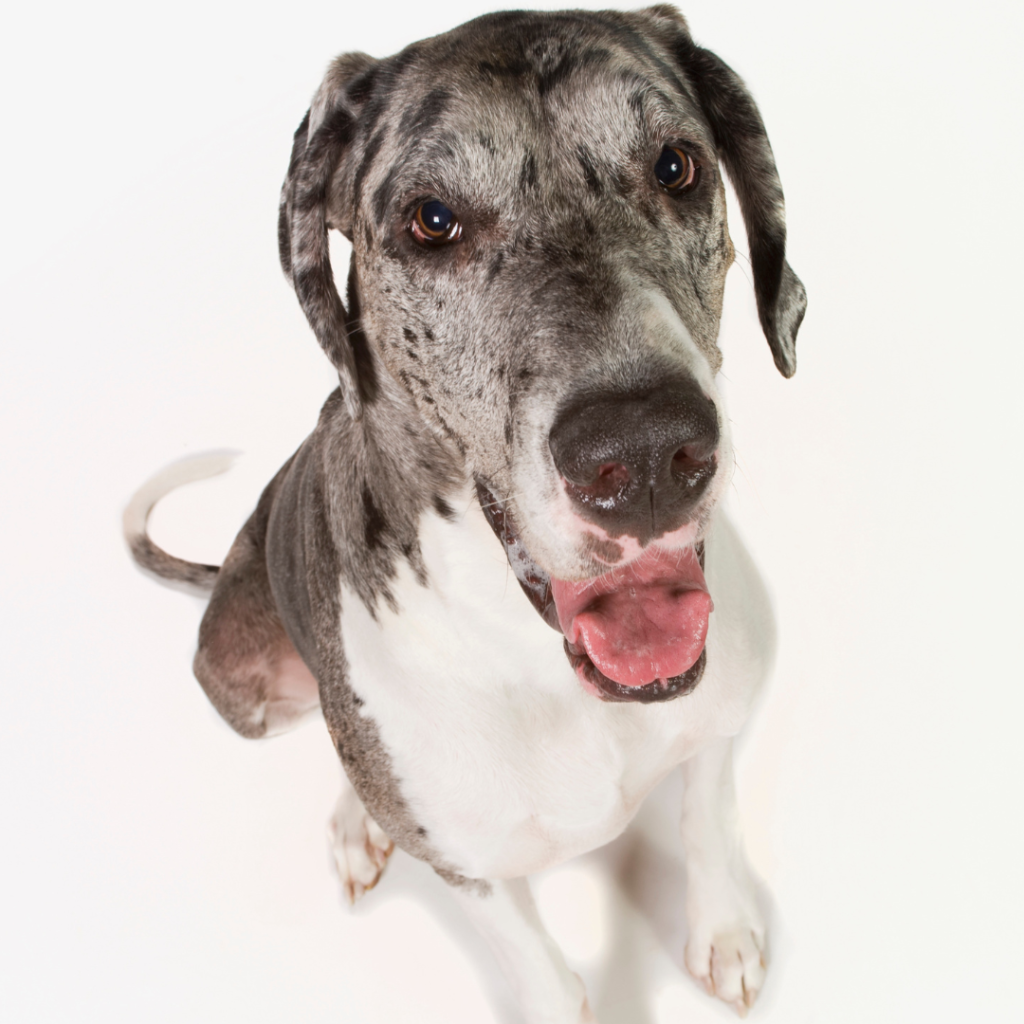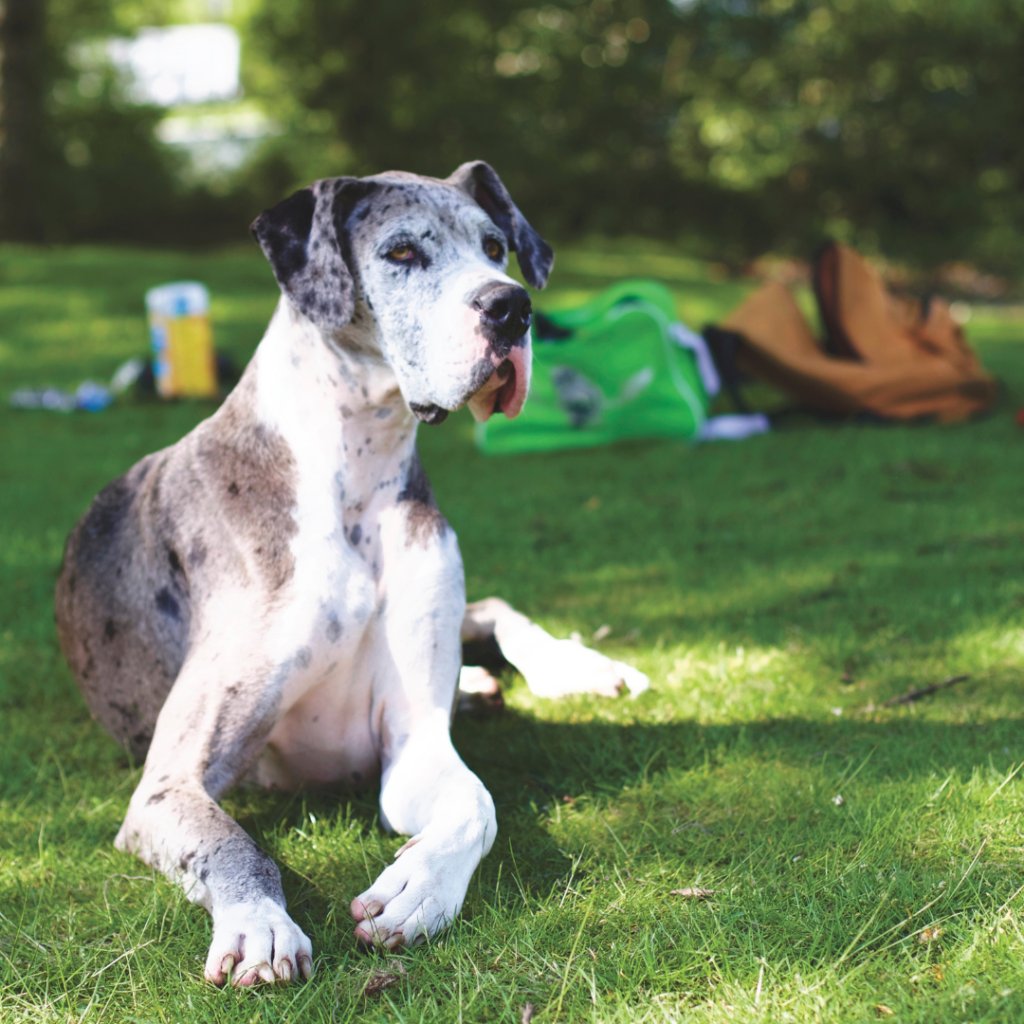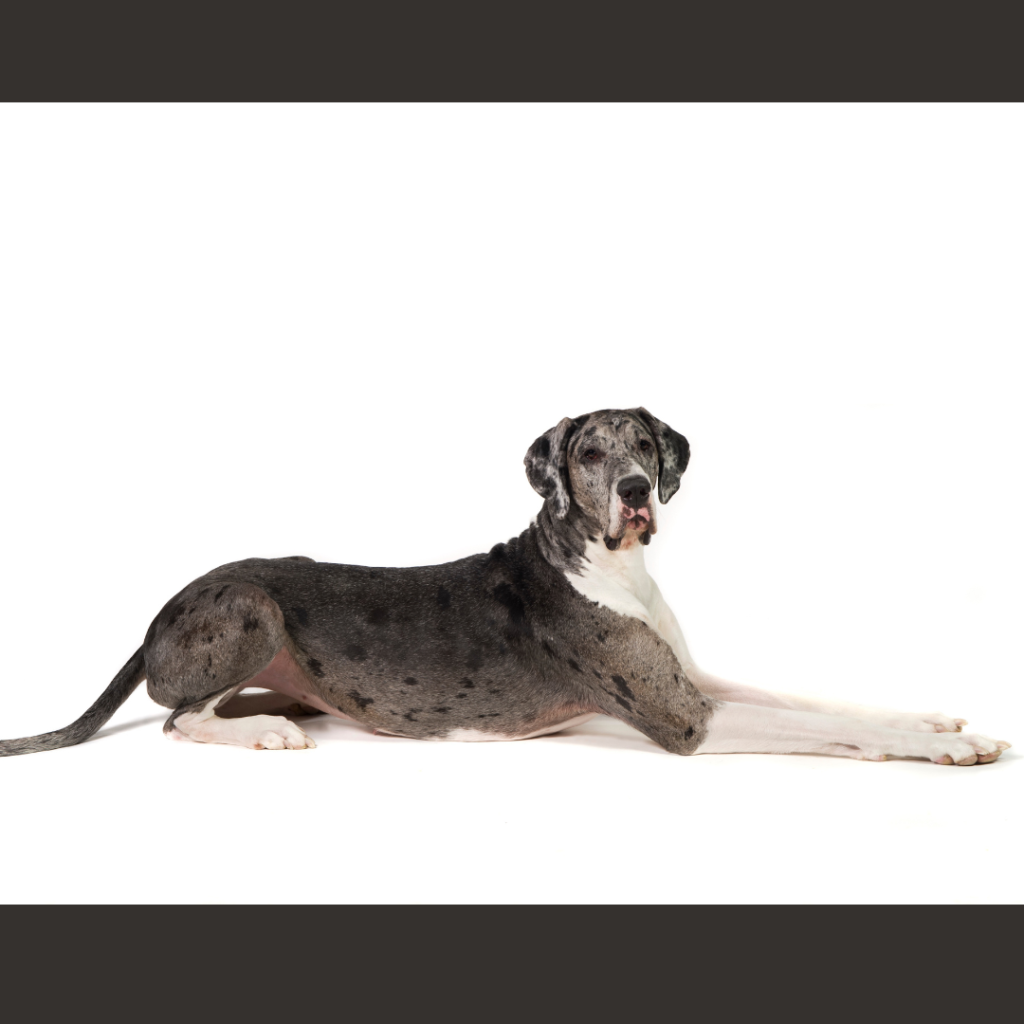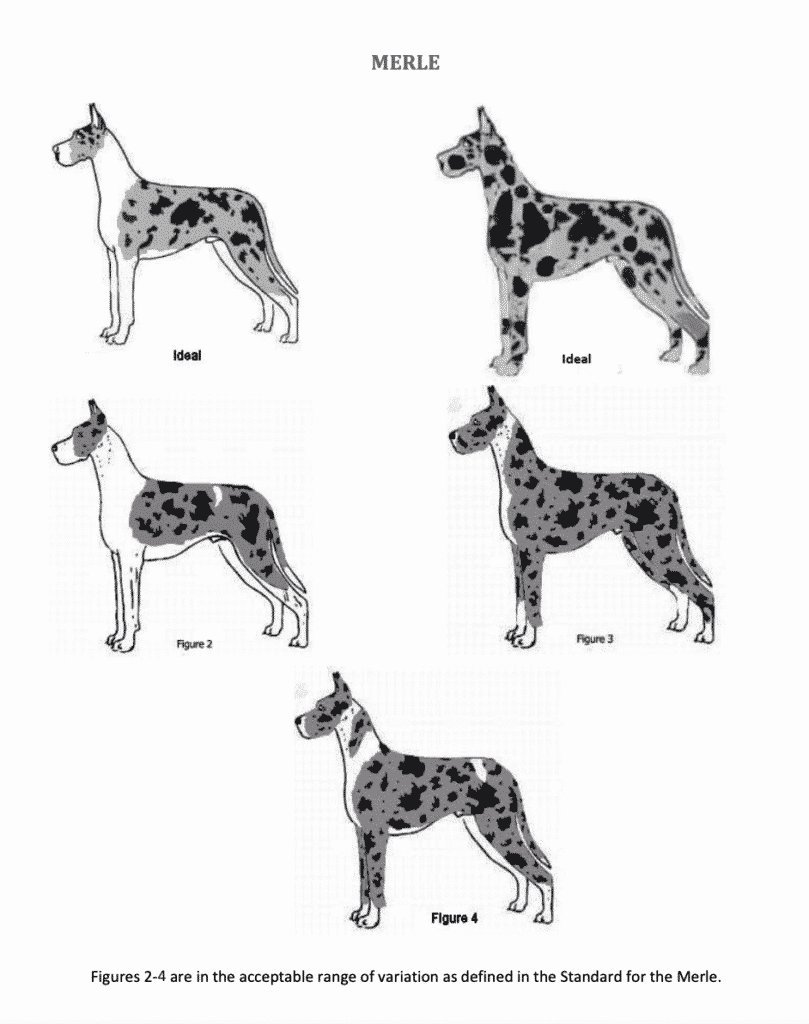Meet the delightful Blue Great Danes – a charming variation of the already lovable breed! These big-hearted giants steal the show with their stunning solid blue coats, ranging from deep steel blue to a lighter, enchanting shade.
But it’s not just about the looks; these gentle giants are all about spreading joy and warmth. With their friendly disposition, expressive eyes, and lovable features, Blue Great Danes become instant family favorites.
Their imposing yet graceful presence adds a touch of magic to any home, making them not just beautiful companions but also the cuddliest friends you could wish for.

All About Blue Great Danes
Blue Great Danes are large dogs that have stunning steel blue coats. A blue Great Dane puppy may start with a lighter blue and darken as they age.
Pure Blue Great Danes are produced by two blue parents. While some breeders intentionally mix the dilute blue coat pattern into other color families (such as harlequin and fawn), blue is it’s own color family and does best that way!
According to the GDCA breed standard, Blue Great Danes “shall be a pure steel blue.
White markings at the chest and toes are not desirable. The desired alert, intelligent expression is projected through the correctly placed, almond-shaped, dark eyes. In Blue Great Danes, a somewhat lighter eye is permissible.
In other words, blue Great Dane dogs should have a lively and intelligent expression and a completely solid steel blue coat with no white markings.
That doesn’t mean that a blue Great Dane with white markings or extremely dark brown eyes is ‘bad’, it just means that they don’t meet the written standard. Genetic variances will happen.
Each dog’s coat is unique to them!
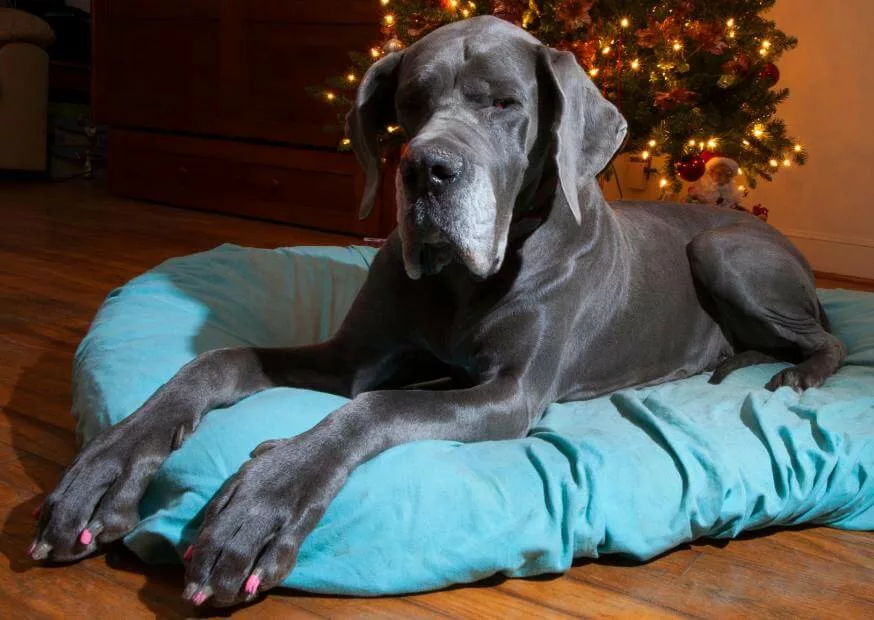
Are Blue Danes Really Blue?
The undertones of their blue coat color (resulting from a dilution gene) appear blue to the human eye. Some people will call the blue Great Dane ‘grey’!
Blue Danes are gorgeous!
Dane breeders often describe the coat color as a deep steel blue, while others will say it’s more of a steely silver blue.
We have seen the blue Great Dane coat color appearing in a range of tones from charcoal to grey; it really depends on the dog’s individual genetics.
A deep steely blue is a preferred tone for Blue Great Danes.
Other coat colors in the Great Dane Breed standard include:
- Black (Black Great Danes)
- Mantle (Mantle Great Danes)
- Harlequin (Harlequin Great Danes)
- Merle
- Fawn (FAWN GREAT DANES)
- Brindle (BRINDLE GREAT DANES)
- Blue (Blue Great Danes)
Off-standard colors include Double Merle Great Danes, which are White Great Danes with predisposed health conditions.
Read more about the colors of Great Danes here.
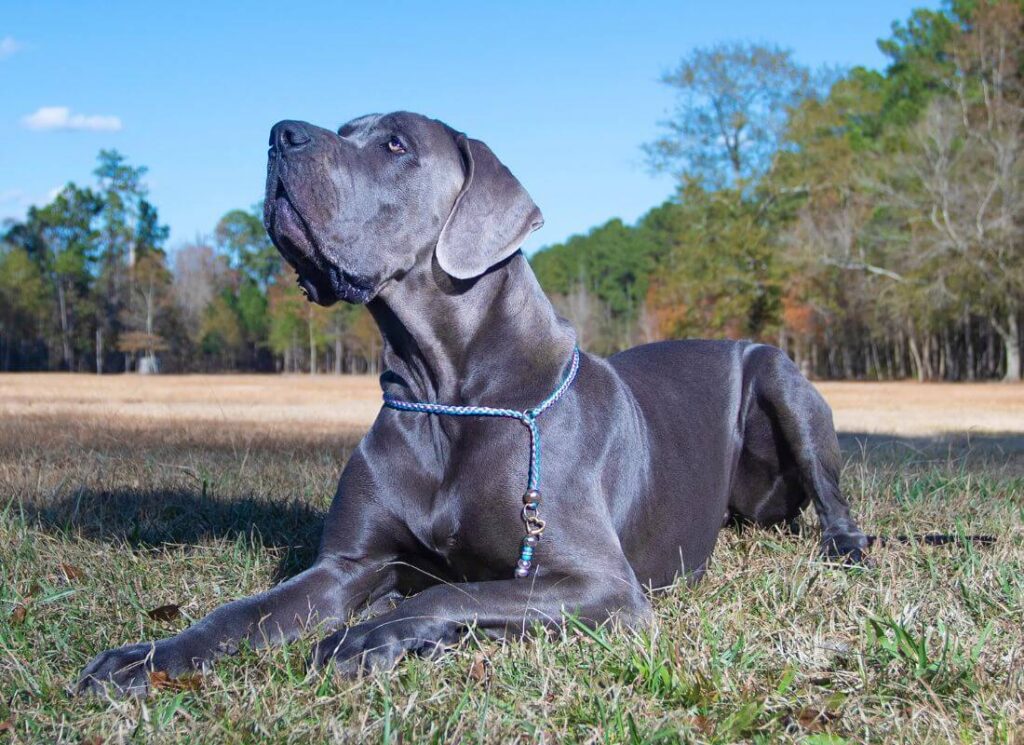
What to Feed a Blue Great Dane Puppy
Nourishing a Blue Great Dane puppy requires a thoughtful approach to support their growth and overall well-being. These gentle giants have unique dietary needs, especially during their crucial developmental stages.
A properly formulated large-breed puppy food that addresses their specific requirements is essential. Look for formulations with controlled levels of calcium and phosphorus to promote healthy bone development without causing rapid growth, which can be associated with skeletal issues.
Adequate protein is crucial for muscle development, and essential fatty acids contribute to coat health.
Regular, scheduled feeding times and portion control are vital to prevent overfeeding, considering their predisposition to certain health concerns. As with any dog, access to fresh water is paramount.
Consulting with a veterinarian is instrumental in tailoring a nutrition plan that aligns with the individual needs of the Blue Great Dane puppy, ensuring a strong foundation for a healthy and happy life.
We recommend the following science-backed foods for Great Dane puppies:
- Purina Pro Plan Large Breed Puppy – any flavor!
- Purina Pro Plan Sensitive Skin & Stomach Large Breed puppy – TOP PICK, salmon-based
- Eukanuba Large Breed Puppy (Great for active and sporting dogs)
- Purina One Large Breed Puppy (Excellent budget option)
- Hill’s Science Diet Puppy Large Breed
- Royal Canin Giant Puppy Dry Dog food (to age 12 months) – TOP PICK, PREMIUM OPTION
- Royal Canin Giant Junior Dry Dog food (8-24 months)
- Purina Large Breed Puppy Chow
Check out THE GIANT DOG FOOD PROJECT to compare brands and values.
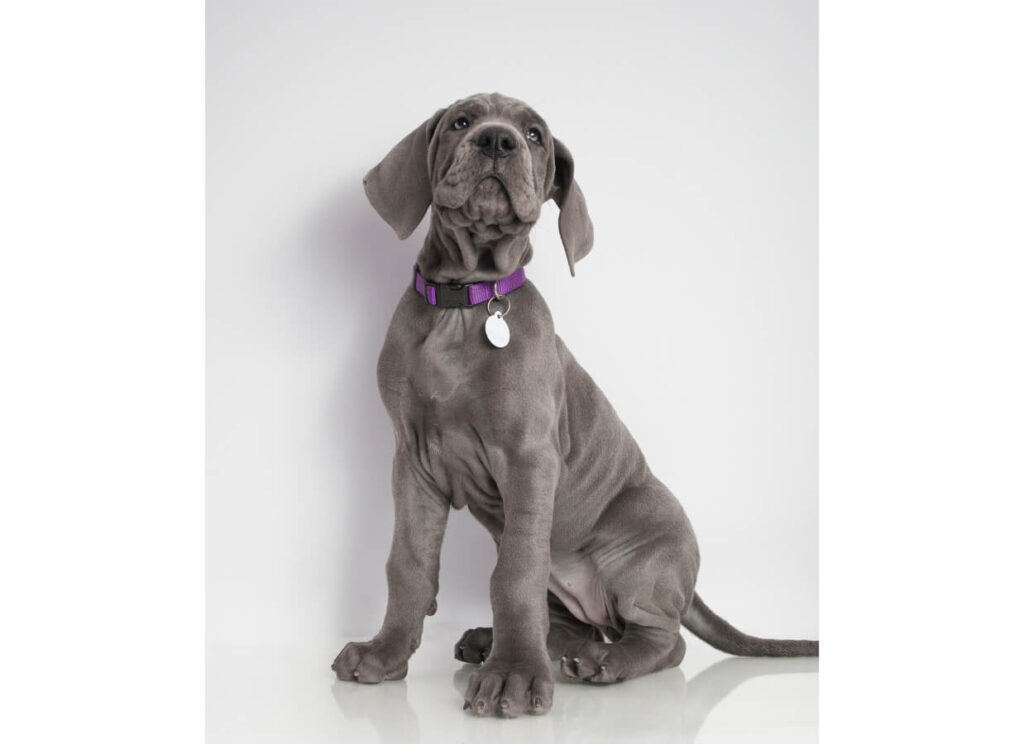
Blue Great Danes Color Genetics
The stunning blue-grey coat of a Great Dane is the result of fascinating color genetics.
The blue coloration is a dilution of the black coat pigment caused by a specific gene known as the Blue gene. In Great Danes, this gene is denoted by the symbol “d.”
When a Blue Great Dane inherits one copy of the dilute blue gene from each parent, it can result in the striking steel blue shade that defines this variant.
Breeders need to be mindful of potential health implications associated with coat color genetics, such as the increased risk of skin sensitivities or deafness in some blue-coated dogs. Understanding these genetic nuances not only contributes to the aesthetic diversity of the breed but also aids responsible breeding practices to ensure the overall health and well-being of Blue Great Danes.
The blue dilute gene in Great Danes is used by off-color breeders to produce “lilac” or “blue harlequin” named dogs.
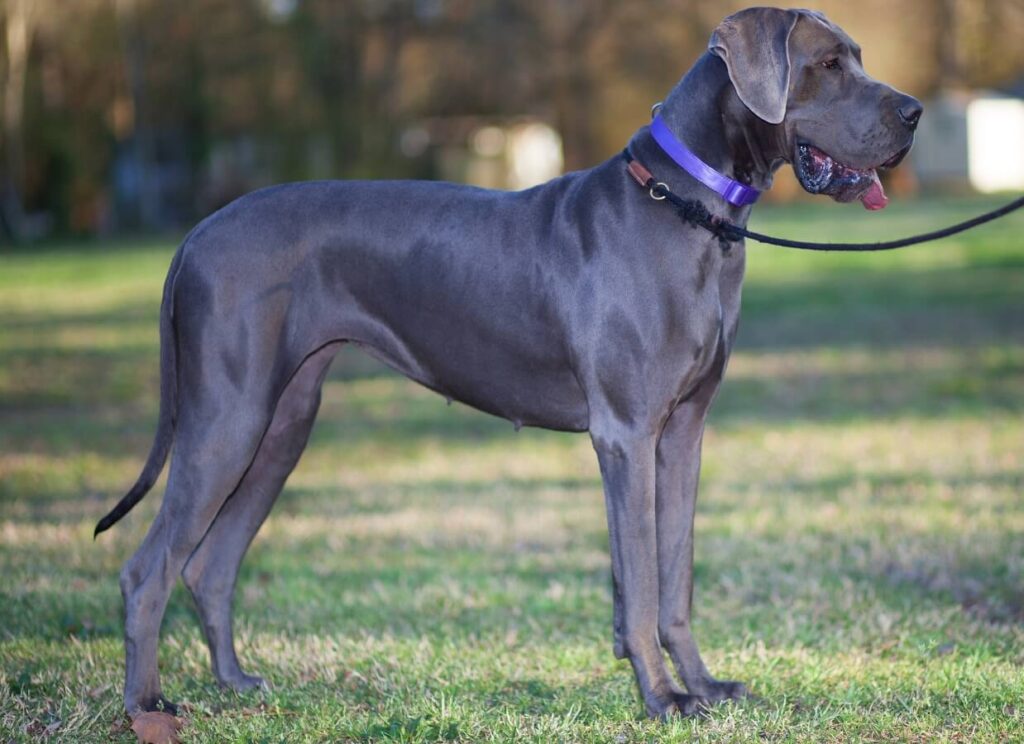
Blue Great Danes Temperament & Personality
Like all Great Danes, blue puppies should be confident, friendly, and courageous!
(Don’t believe us? Check out the written standard for a Blue Great Dane here).
Well-bred Great Danes from ethical breeders are truly ‘gentle giants’. They make amazing family pets for people who don’t mind the size (and the drool)!
Blue Great Danes, like all Danes, should get along well with other dogs and make wonderful companions for those willing to put the time into training and socialization.
Blue Great Danes used to be used to hunt wild boar!
Their enormous size and confident personalities made them well-suited for this job. Through years of selective breeding, the Great Dane Breed has come to be known as extremely gentle. Most Great Danes these days are perfectly content to be with their families and on a cozy bed.
Great Danes are the biggest lap dog you can own. They love to sit on top of people and receive affection. A Great Dane is a large dog that requires special consideration for their orthopedic and internal health. Be prepared to do some research before purchasing one.
This doesn’t mean that they are lazy, though. Great Danes love to run, play and explore. They require daily enrichment and exercise to stay in great shape.
We believe that people who are breeding blue Great Danes should be highly focused on health, structure, and the development of the classic, robust, loving Great Dane personality.
If you are interested in purchasing a Great Dane puppy from an ethical and reputable breeder, we highly recommend searching the breeder registry at www.gdca.org.
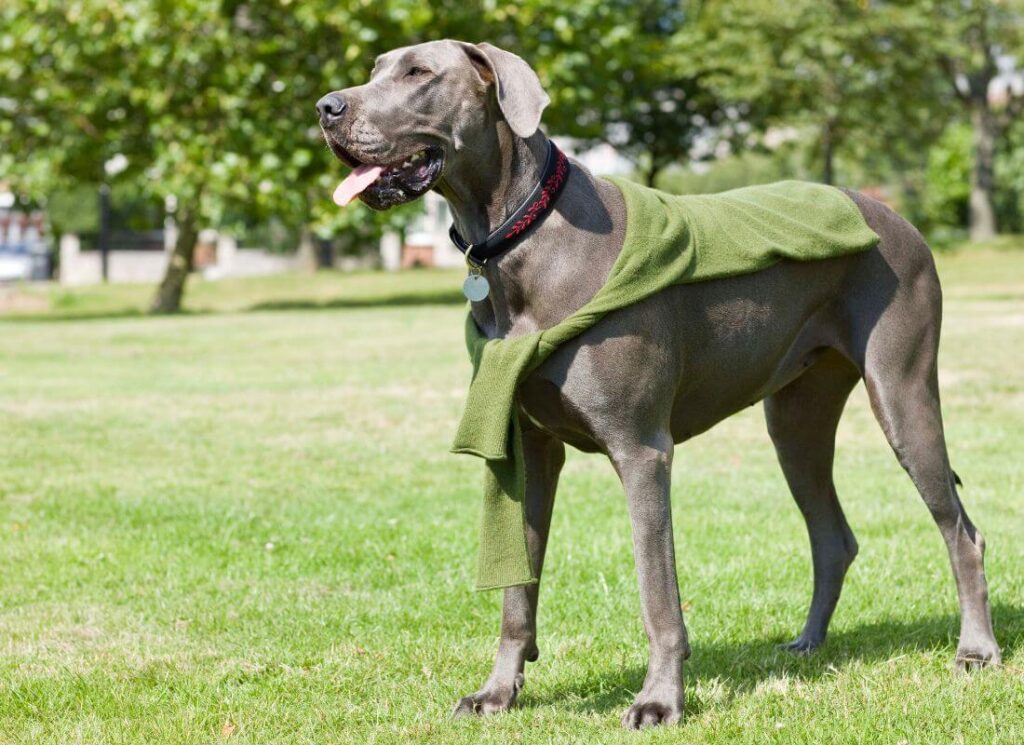
Can Blue Great Danes Be Shown?
Solid Blue is the only dilute coat color accepted by the GDCA as a standard for Great Danes.
While the coat color itself doesn’t disqualify Blue Great Danes from being shown, breed standards typically emphasize other factors such as overall conformation, temperament, and adherence to breed-specific characteristics.
The American Kennel Club (AKC), for example, recognizes Blue as an acceptable color for Great Danes. However, the dog must still meet all other breed standards. It’s important to note that some kennel clubs or breed organizations may have slightly different standards, so it’s advisable to check the specific regulations of the organization hosting the dog show.
In general, responsible breeding practices and adherence to breed standards are prioritized in dog shows to ensure the health and well-being of the dogs. If a Blue Great Dane meets these criteria, it can certainly participate and compete in conformation events, showcasing the beauty and characteristics of the breed beyond just coat color.
Standard vs. Off-Standard Colors in Great Danes
The American Kennel Club does not make the rules on which colors are accepted for Great Danes; this is determined by the breed’s parent club (in the case of Danes in the U.S., it’s the GDCA).
There are many ‘off-standard’ versions of coat colors showing up in Great Danes, including ‘lilac harlequin’, ‘blue harlequin’, and ‘lilac merle’. These colors often come from the dilute and recessive genes of the blue Great Dane.
The practice of breeding for these colors is controversial and at times, undeniably unethical.
What is a Blue Harlequin Great Dane
Blue Harlequin Great Danes have a white base coat with blue torn patches. They are extremely popular, however, that unique and rare coat color is not accepted in GDCA, FCI, or Canadian written standards for the breed.
They can, however, be registered by the AKC.
The written standard for all dog breeds defines the function, form, and look of each individual breed. The colors in each breed (including blue) are often chosen for a reason.
While some colors could be added in the future, breeders have to first prove that those new colors occur naturally in the breed, that the color will strengthen the gene pool, and that the puppies are consistently healthy and robust examples of the written standard.
The recessive Blue gene that causes the deep steel blue color is desirable to breeders that are focused heavily on creating ‘unique’ and ‘designer’ off-standard colors in Great Danes.
These Dane breeders have been known to mix dogs of all colors (including fawn, mantle, merle, and harlequin) with Blue Great Danes to achieve new and interesting colored markings.
What is a Blue Merle Great Dane?
The merle gene (seen most often in the merle or harlequin Great Dane) paired with blue Dane will often create unusual coat patterns such as that seen on a blue Harlequin Great Dane or ‘blue merle’ Great Dane’.
This practice is considered somewhat unethical in the world of breeding Great Danes. It happens similarly in other dog breeds, however, and unique colors remain popular.
Dog owners should ask many questions before choosing a breeder for their Great Dane puppy and verify the pedigrees and health testing results (heart, hips, eyes, thyroid) of the dogs being bred.
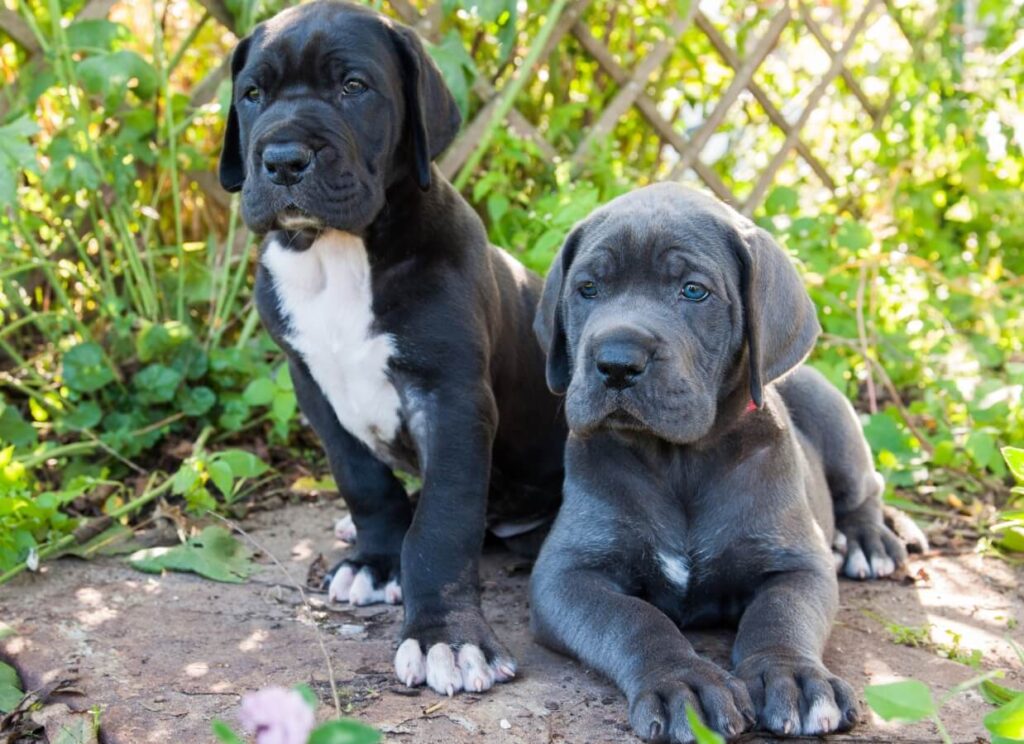
Where to Buy a Blue Great Dane Puppy
When you are looking to purchase a Great Dane puppy, health and structure should be considered before color.
A Great Dane is a large dog and if they are bred only with designer colors or profits in mind, their structure and temperaments may suffer as a result. Since the Great Dane is predisposed to many health issues, it is crucial to do your due diligence.
With any Great Dane puppy you find from any Great Dane breeder, verify the pedigree AND the health testing results of both parents. Good breeders will have heart, hip, eye and thyroid panels to share with you.
Solid pure steel blue Great Dane puppies will be a great place to start if you want a striking and beautiful coat color.
We recommend searching the Great Dane breeder database at gdca.org when looking for Great Dane puppies.
Are Blue Great Danes Rare?
The blue Great Dane may seem rare, but they really are not.
A blue Great Dane may easily be confused with a Weimaraner, especially as a puppy! Because of this, and because many people don’t know the difference between a blue Great Dane and a silver or grey one (hint, they are the same), they may be viewed as rare.
It can be difficult to find an ethical and reputable Blue Great Dane breeder, as many breeders that fully test and frequent dog shows have focused primarily on the popular Harlequin/Black/Mantle or Fawn/Brindle lines instead of blue.
It’s not impossible, however, to find a blue Great Dane puppy from an excellent breeder. We recommend searching the Great Dane breeder registry at GDCA.org (U.S.) or Canada.
Do Blue Great Danes Have More Health Problems?
Ask 10 people this question and you will receive 10 different answers!
If you have a blue Great Dane that is experiencing health problems, chat with your vet.
Health problems are not necessarily related as much to coat color as they are to genetics, the food you choose, and the environment you create for your dog.
The Blue Great Dane’s lifespan should be no shorter or different than that of any other healthy Great Dane! The food you choose to feed makes a huge difference!
Blue Great Dane Health Problems
The average Great Dane is susceptible to a list of genetic health problems, including allergies, heart problems, and hip dysplasia, (which can happen to a Great Dane with any coat color).
These health problems are passed along in the pedigree and depending on the breeder you choose, could be a real problem for your Great Dane.
Always keep an eye on your Great Danes’ body condition and don’t make assumptions that their health problems are purely related to markings. It’s just not always the case.
The blue gene that they carry should not cause any additional health problems, however, color dilution alopecia (CDA) is a problem in other breeds that come in the lilac or blue coat color. It has also been seen in Great Danes!
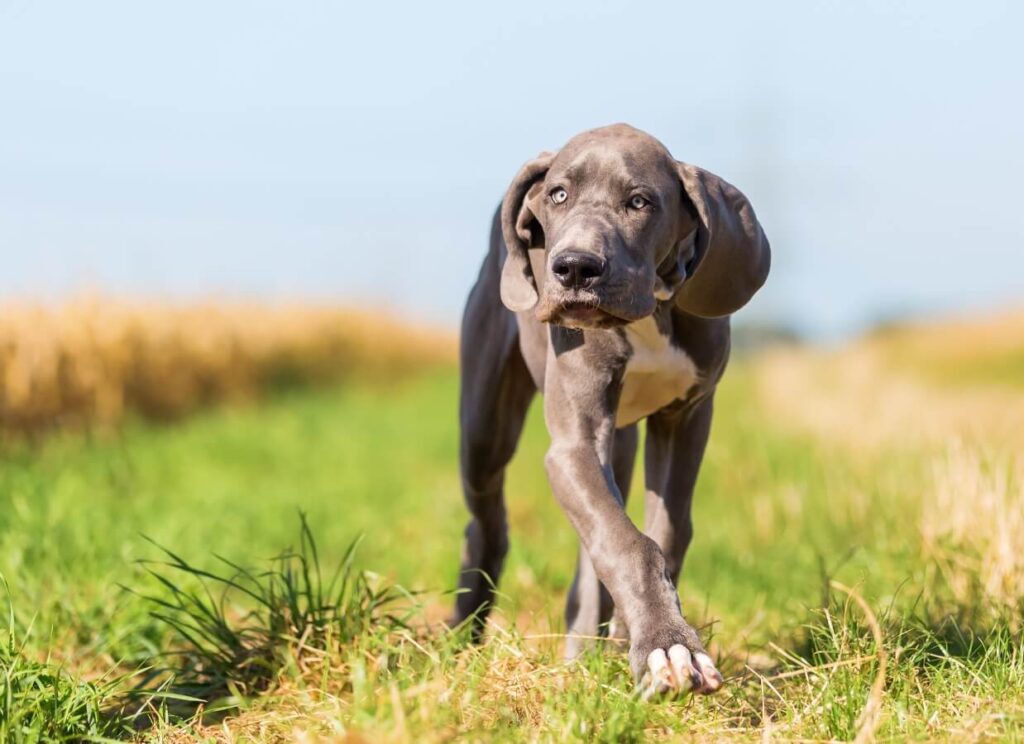
Blue Great Dane Color Dilution Alopecia
Color Dilution Alopecia (CDA) causes hair loss, thinning, bald patches, and itchy skin. The exact cause is not well understood, however, it is easily managed.
It is important to note that CDA does NOT affect all blue Great Danes.
Blue Great Danes may be susceptible to this disease, however, so check in with your veterinarian if you see any sign of it.
Signs include itching, dry patches, hair thinning, and hair loss.
A blue Great Dane puppy may begin to show signs of CDA at around 6 months of age, but it can happen at any time in their lives.
This is one reason why intentionally mixing the blue gene into otherwise strong color genetics to create diluted designer colors is often seen as problematic.
If a blue Dane that is prone to this disease is introduced into an otherwise strong and robust color family, it may create a long line of undesirable recessive traits that are difficult for breeders to address.
We’ve linked to a VCA article below with more information on CDA in Blue Great Danes:
Blue Great Dane Lifespan
Blue Great Danes can live an average of 7-10 years. For more information on the lifespan of Great Danes in general, check out our blog post below!
Bloat, hip dysplasia, wobblers, arthritis, and heart problems are some of the major reasons why some Great Danes don’t live as long. All of those disorders have ties back to genetics!
Always be diligent when choosing your breeder, for this reason. A well-bred blue Great Dane puppy should be hefty, vibrant, curious, and have excellent eyes, hips, feet, and structure.
Search the GDCA.org Breeder Directory below! Good breeders tend to have terrible websites; don’t be alarmed. They are spending more time on their dogs than they are on their marketing:
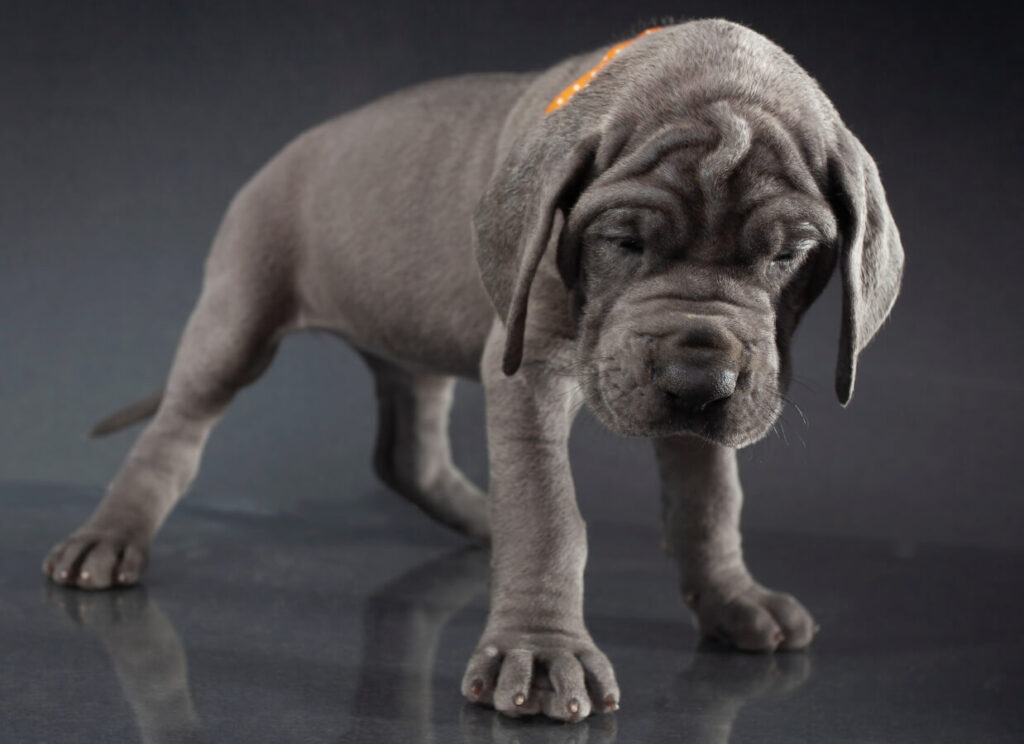
Blue Great Dane Breeders
The best blue great Dane puppy breeders are focused first on health and temperament. Blue Great Dane puppies from a reputable and ethical breeder will be healthy, vibrant, and full of life!
Blue puppies can happen anytime two parents who carry the recessive blue gene are bred. This can mean that pure steel blue puppies may come, most commonly, from the following pairings:
- Blue + Blue
- Blue + Black
- Blue + Harlequin (HARLEQUIN GREAT DANES)
The blue offspring from any of these pairings will be born with floppy ears and a pale bluish color that will change slightly as the puppy matures.
Our favorite Blue Dane Breeders
We recommend:
http://www.caeruleusdanes.com/
http://www.cheshiregreatdanes.com/
https://www.oceanbluedanes.com/
There are many Blue Great Danes sitting in rescues, waiting for the right home! Don’t be afraid to bring a rescue dog into your family.
Adopt OR shop, responsibly!
FYI: The Great Dane Breeder Scam
Looking for a Great Dane puppy? Make sure you read our blog post on the Great Dane breeder scam before you start contacting breeders!
Scammers often create fake online profiles or websites, offering purebred Great Dane puppies at attractive prices. Victims, eager to welcome a new furry family member, may pay deposits or the full amount upfront, only to discover that the promised puppy never existed.
These scams not only result in financial loss but also inflict emotional distress on individuals seeking a genuine and reputable breeder. To avoid falling victim to such scams, potential buyers should thoroughly research breeders, ask for references, and be cautious of deals that seem too good to be true.
Can a Blue Dane be Bred to a Harlequin Dane?
A blue Great Dane + harlequin Great Dane pairing can result in the ‘blue harlequin Great Dane’ which is a white dog with torn blue patches instead of torn black ones.
This dog will look similar to a harlequin Great Dane, but that blue dilution factor will have reduced the pigment in each spot to grey.
The blue harlequin Great Dane is not considered to have an ‘acceptable’ color in the written breed standard.
Many breeders will tell you that it is unethical to deliberately introduce the dilute gene into an already complicated genetic situation. Others will do it because the pursuit of diluted and interesting colors (including shades of ‘lilac’) is popular.
Some breeders may happen upon a Blue Harlequin in a litter because a recessive merle gene is running around in their pedigree.
We do not encourage the practice of purposefully seeking out off-standard colors, however, many of these colors do occur in the breed! For more information on off-standard colors, read here.
We believe that you should love the Great Dane in front of you!
Color Families in Great Danes
Keeping color families pure helps Great Dane breeders keep tabs on their pedigrees and not make mistakes or be surprised when recessive genes show up.
Color families also help maintain the breed standard, so that a Great Dane always looks like a Great Dane.
A merle+merle pairing can cause the white coat or merlequin double-merle puppies that are often deaf or blind. (Note: a blue Harlequin Great Dane, on the other hand, likely won’t have those problems).
Color families in Danes typically mean that a breeder will ‘stay’ in a lane when it comes to the colors they breed.


